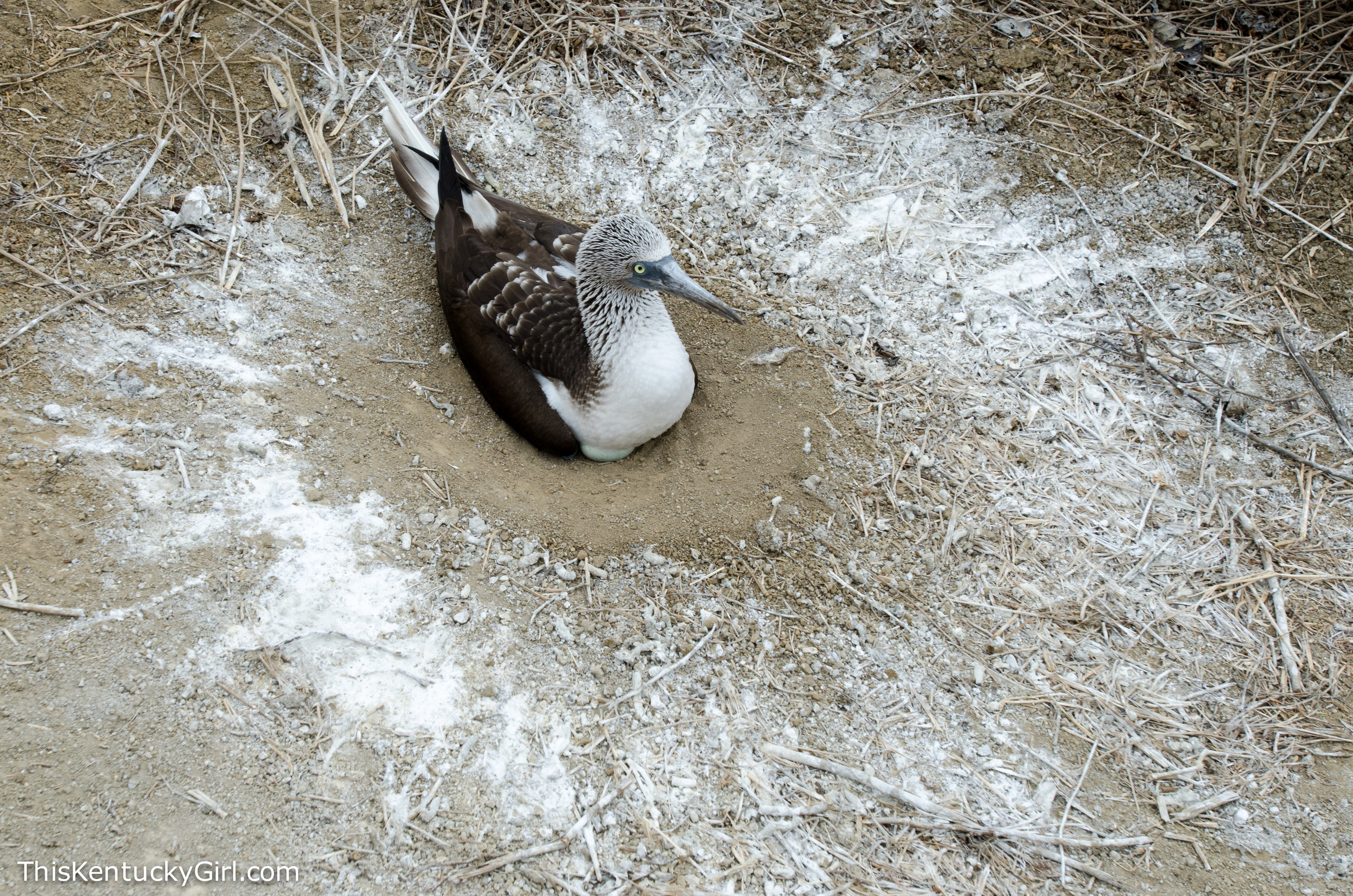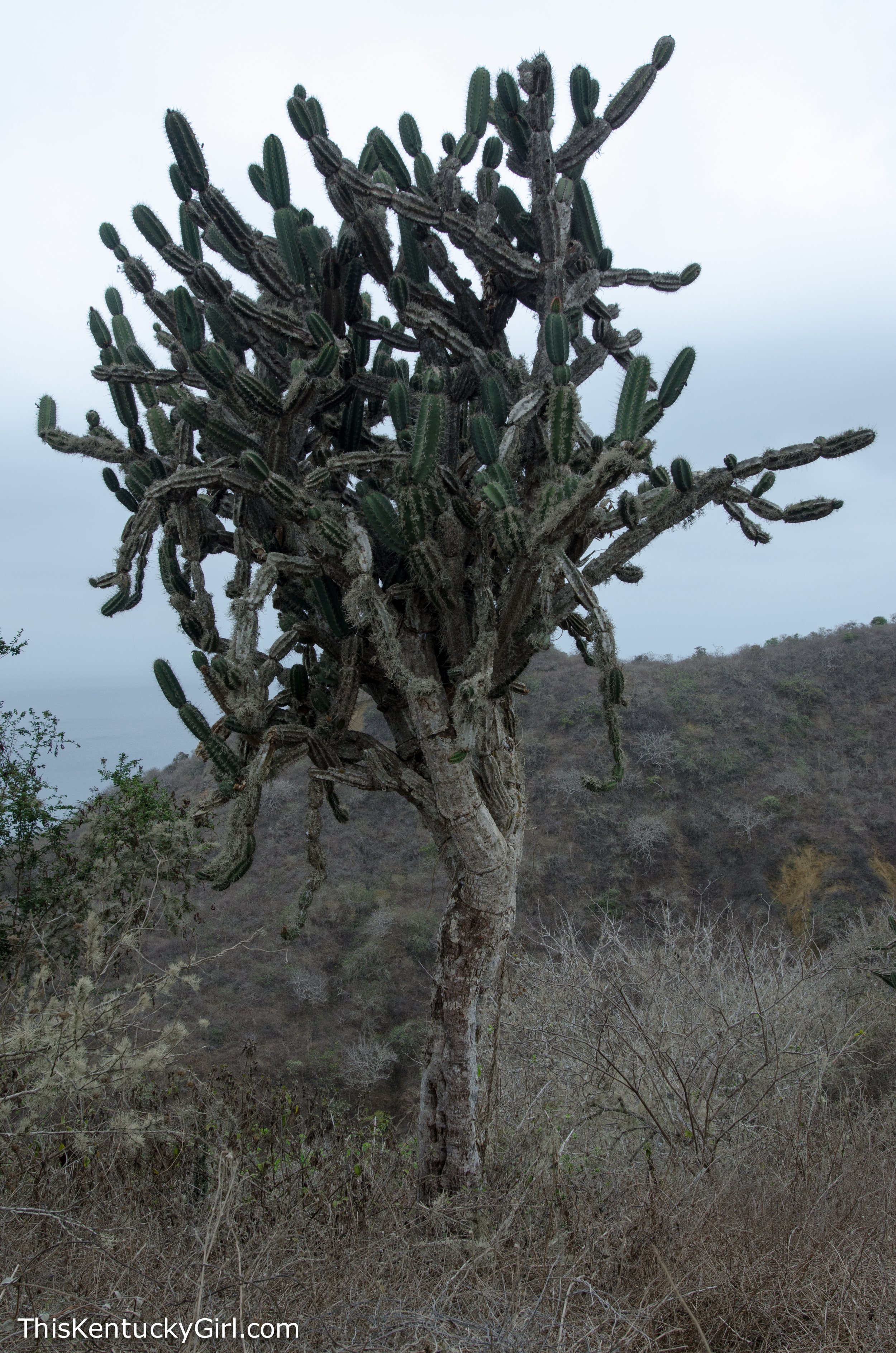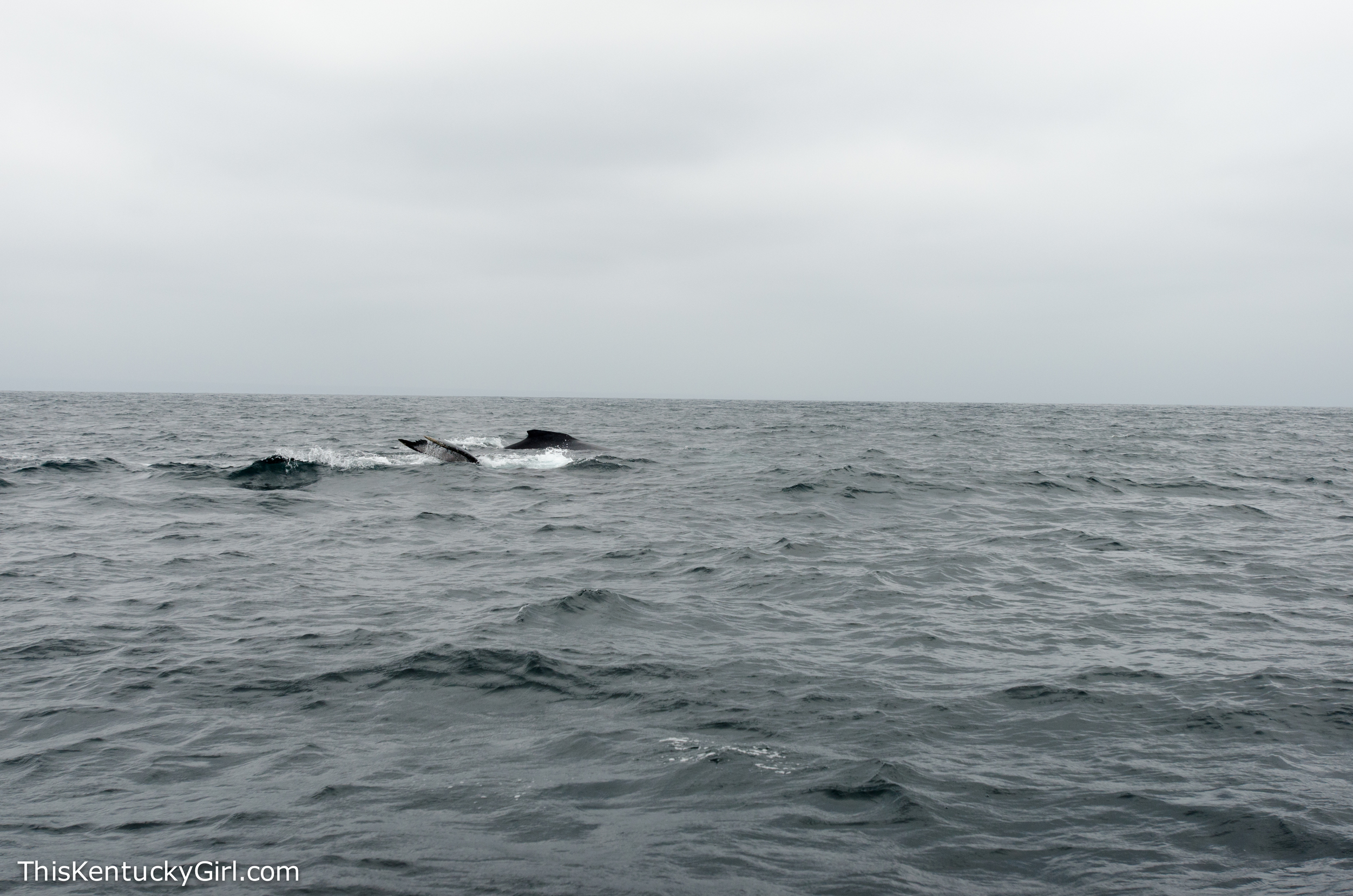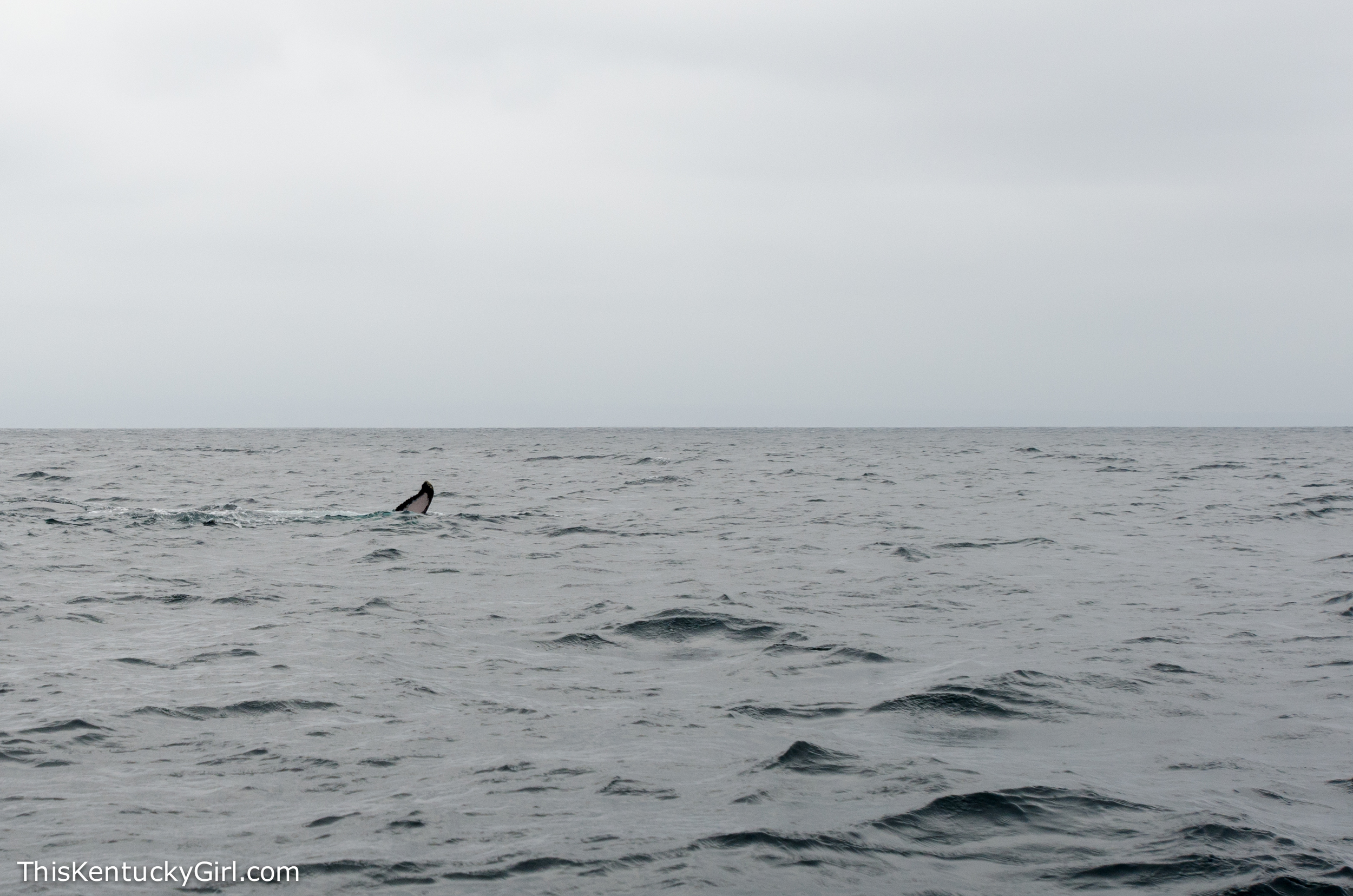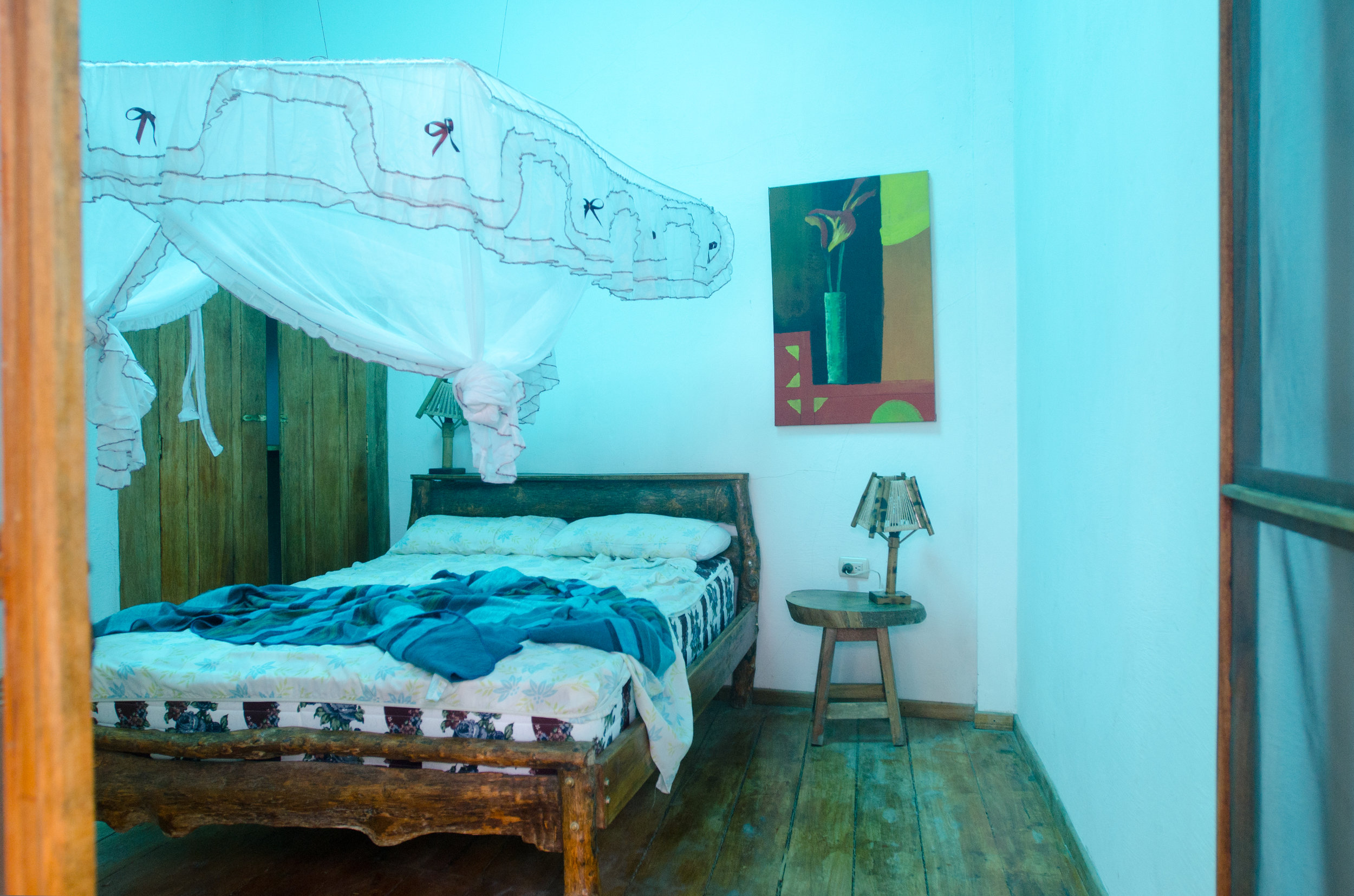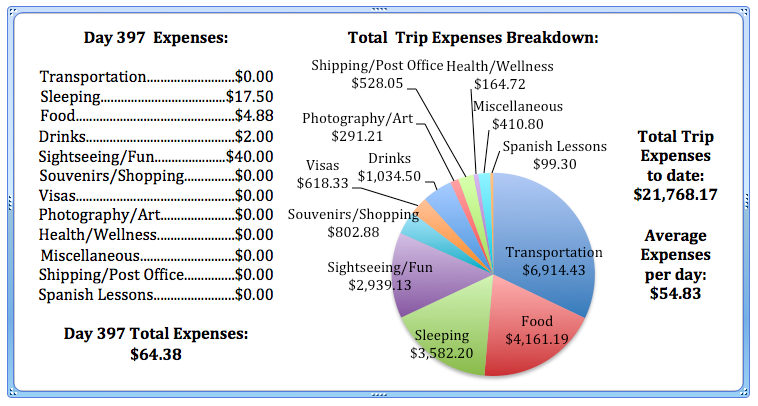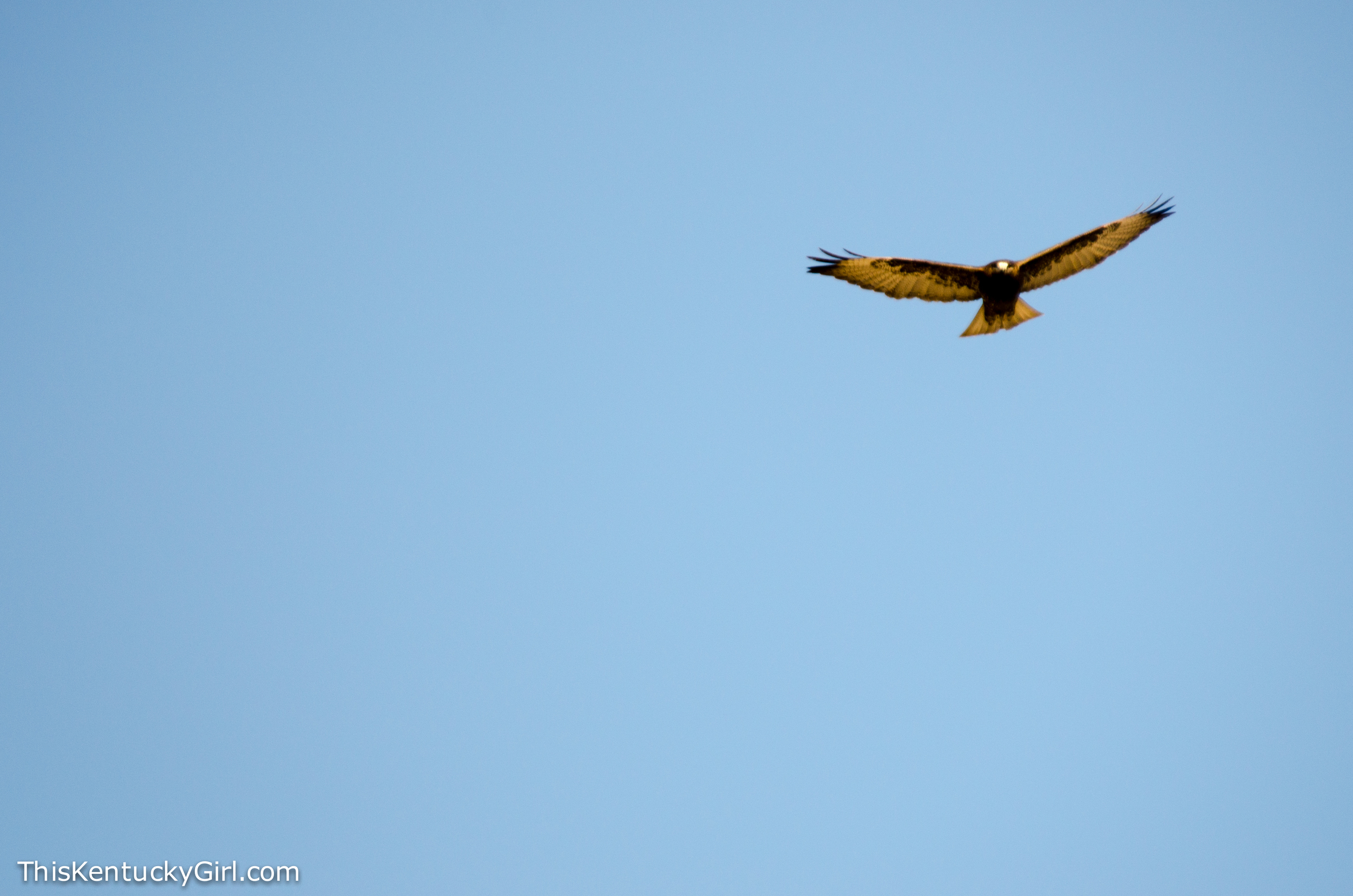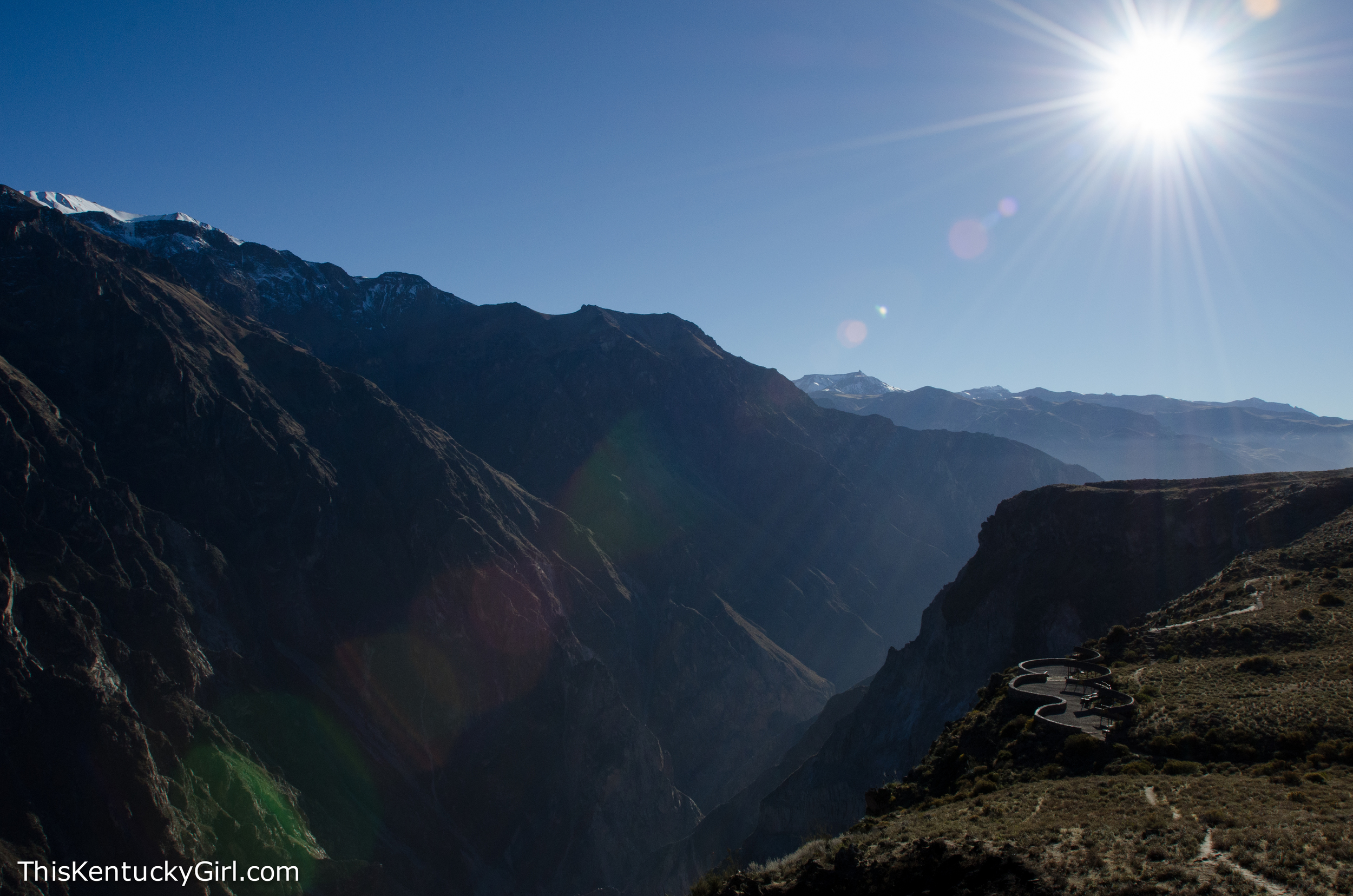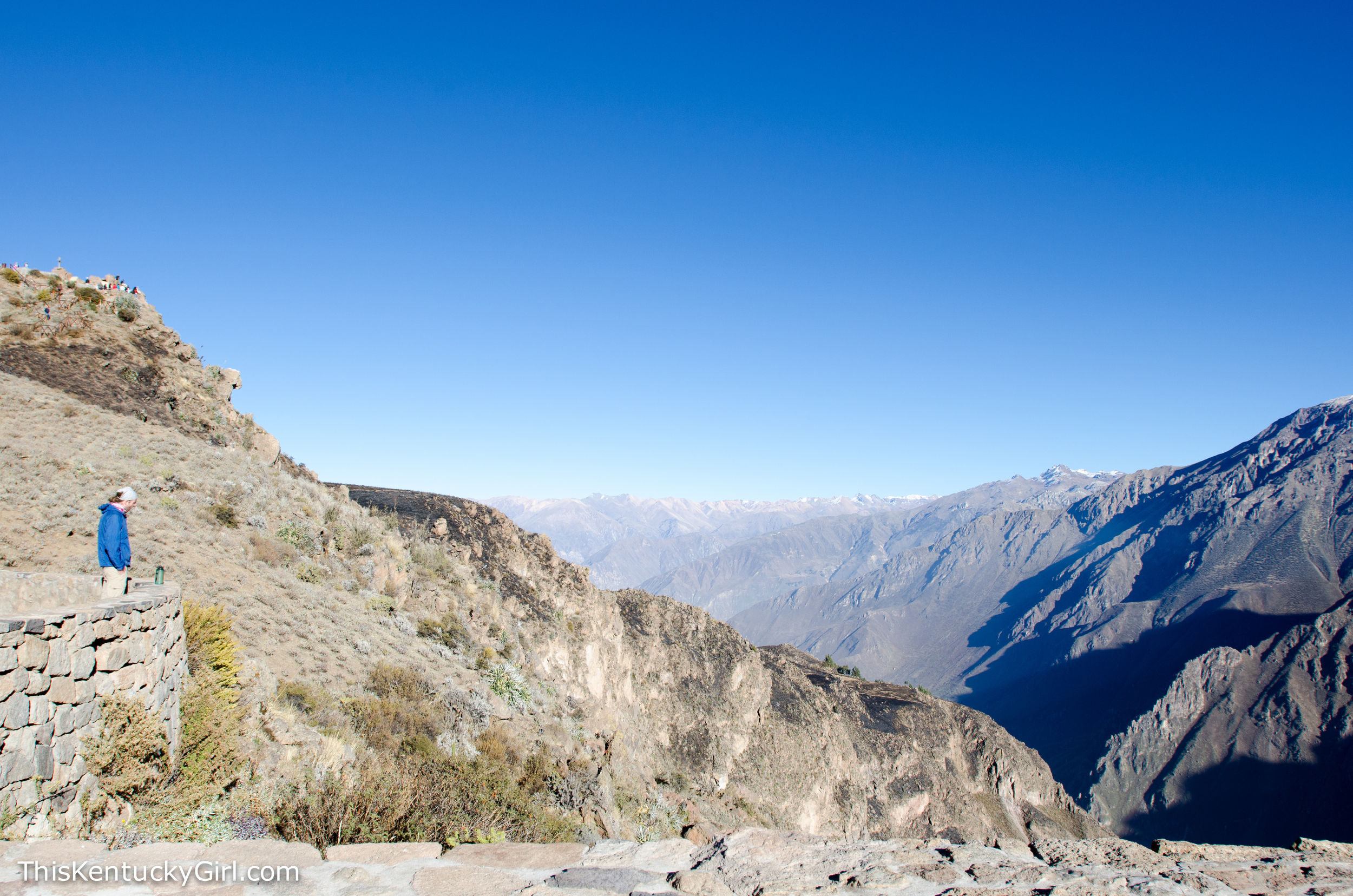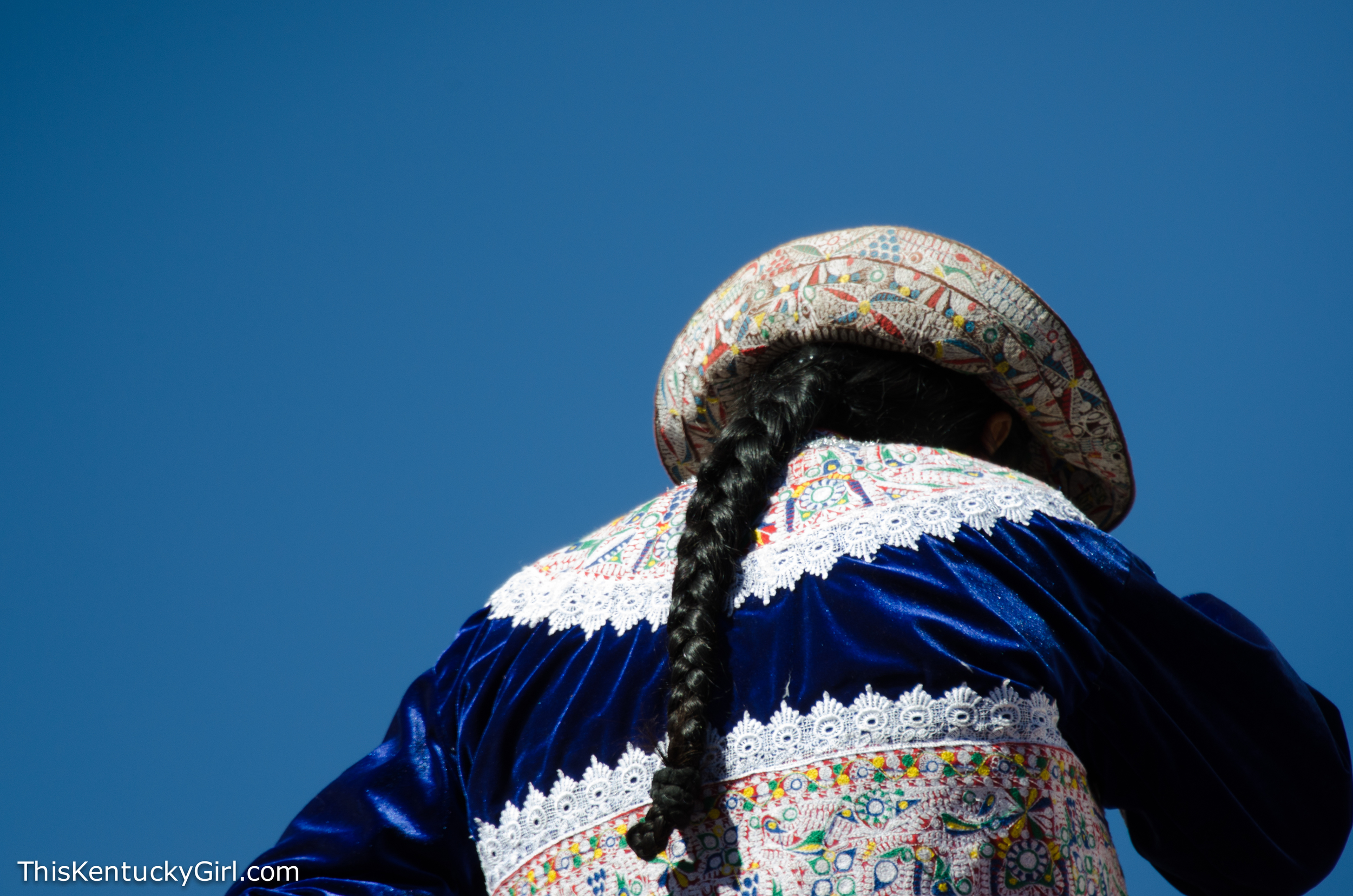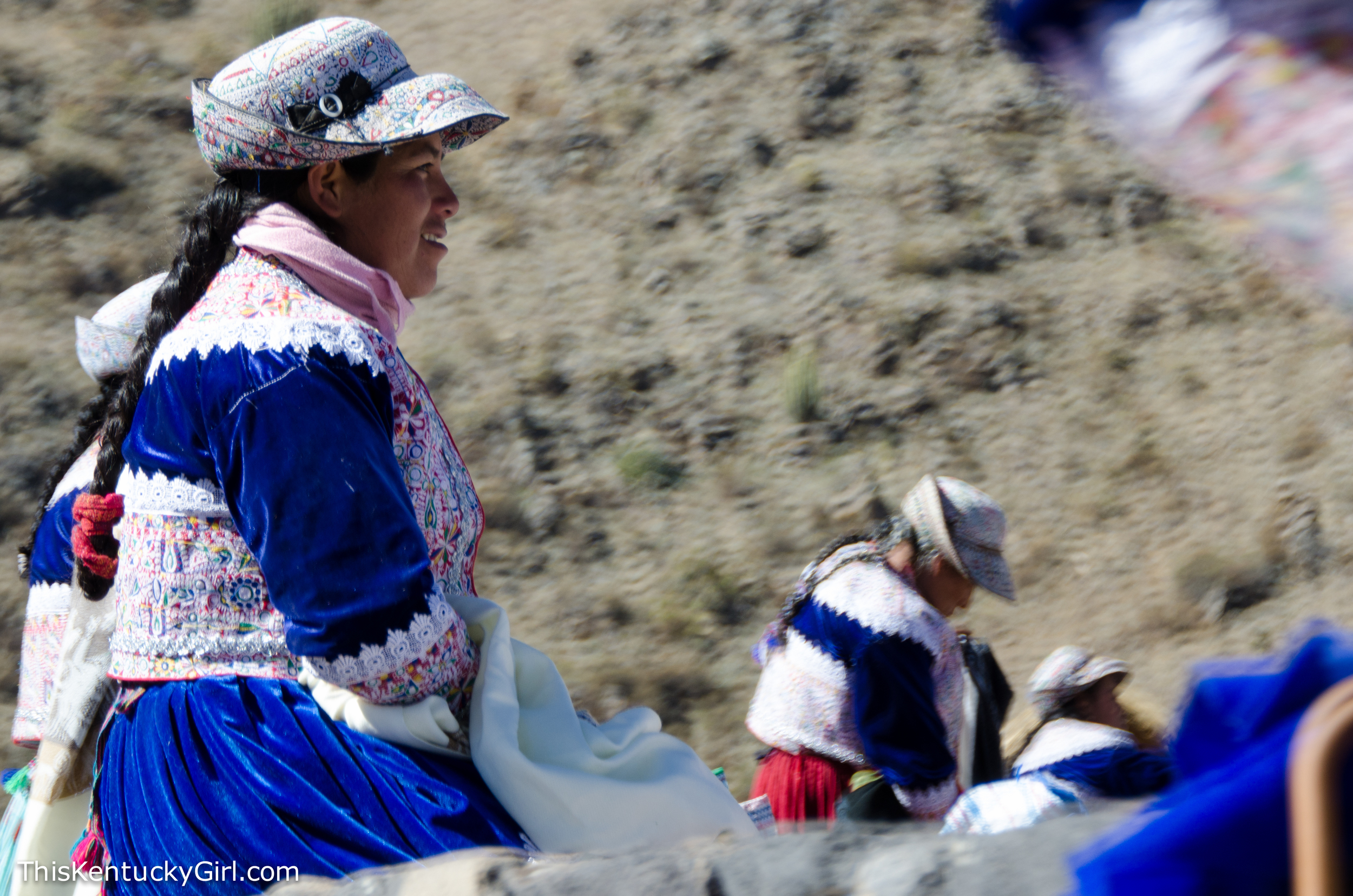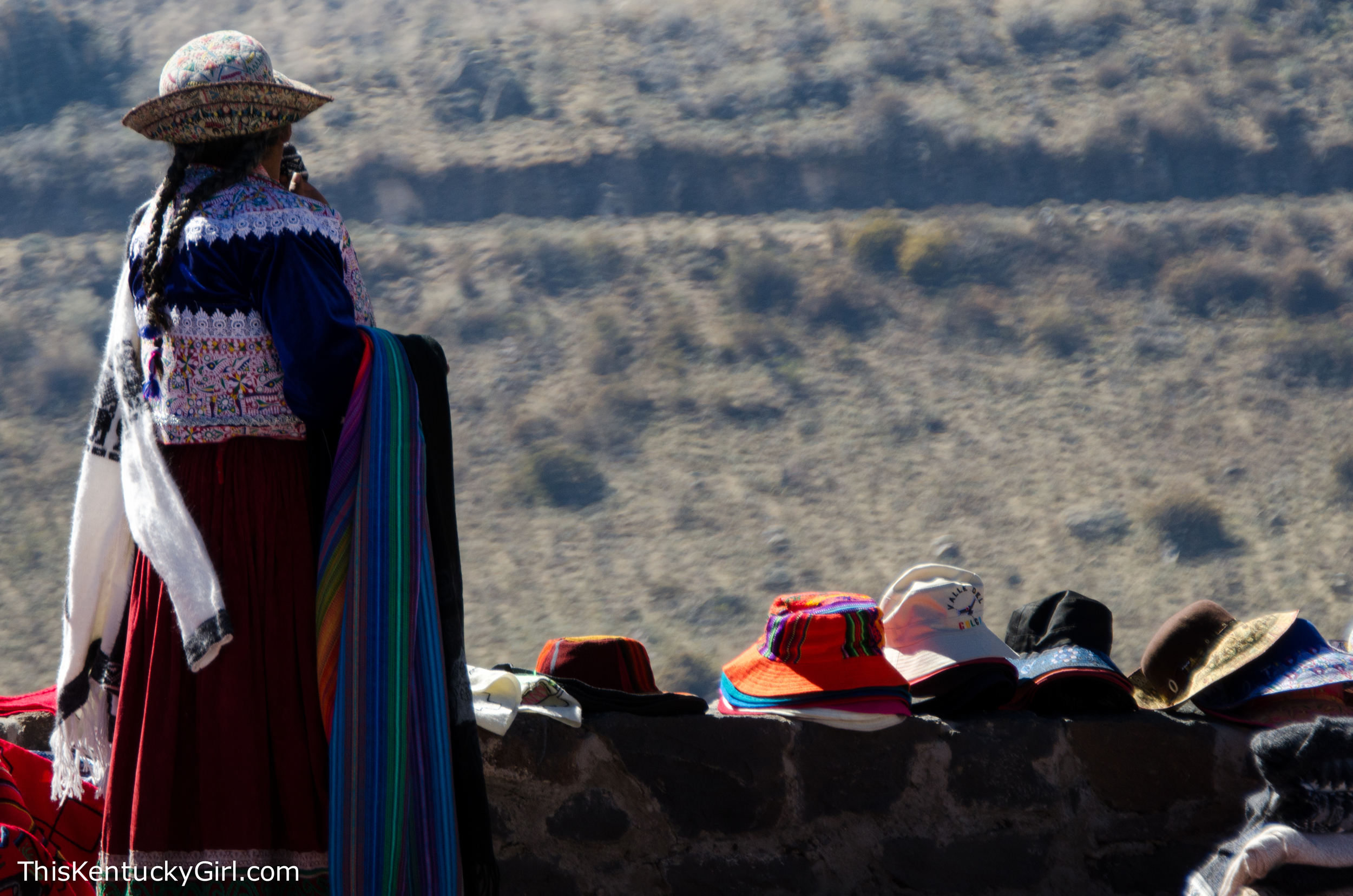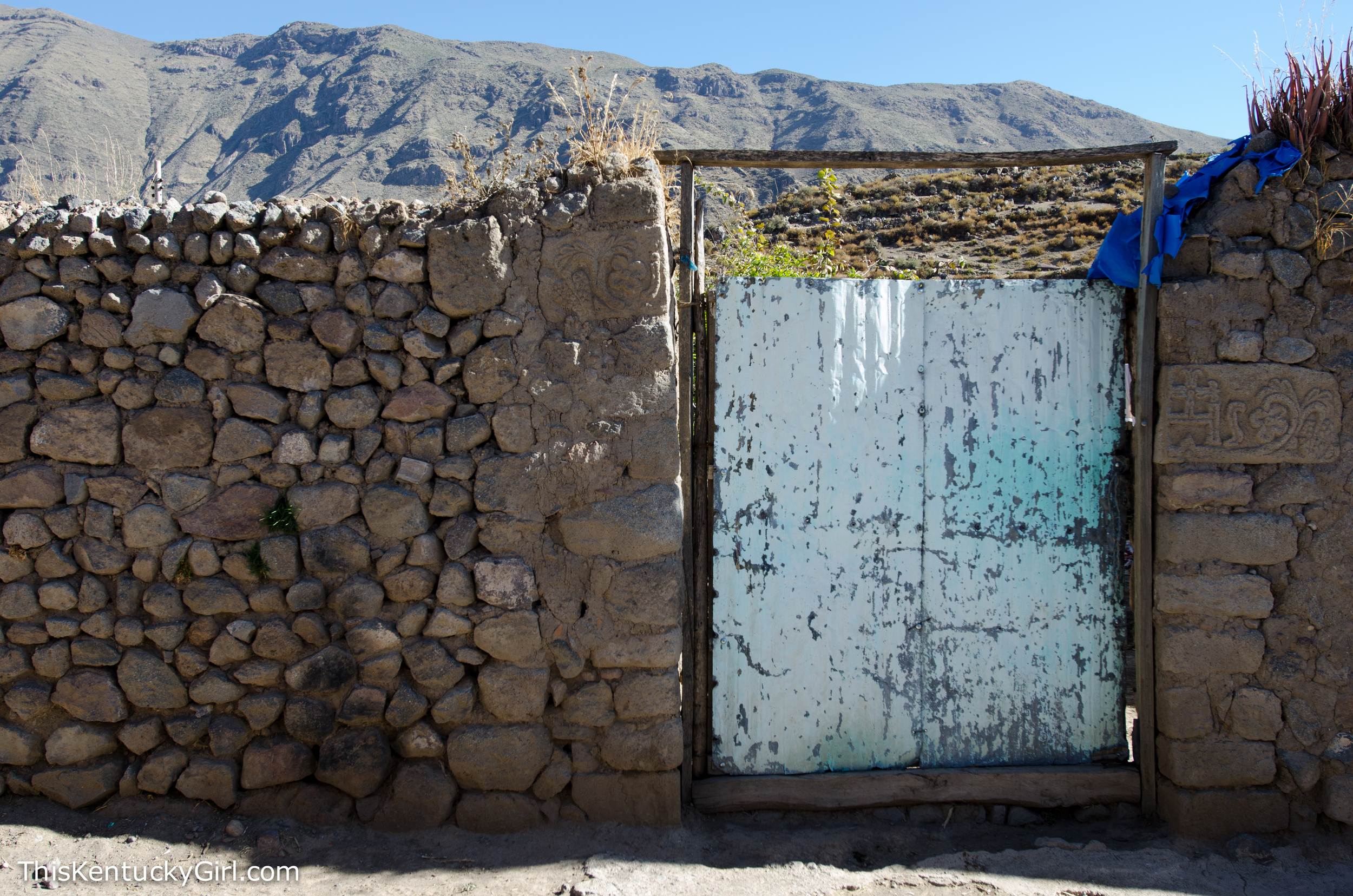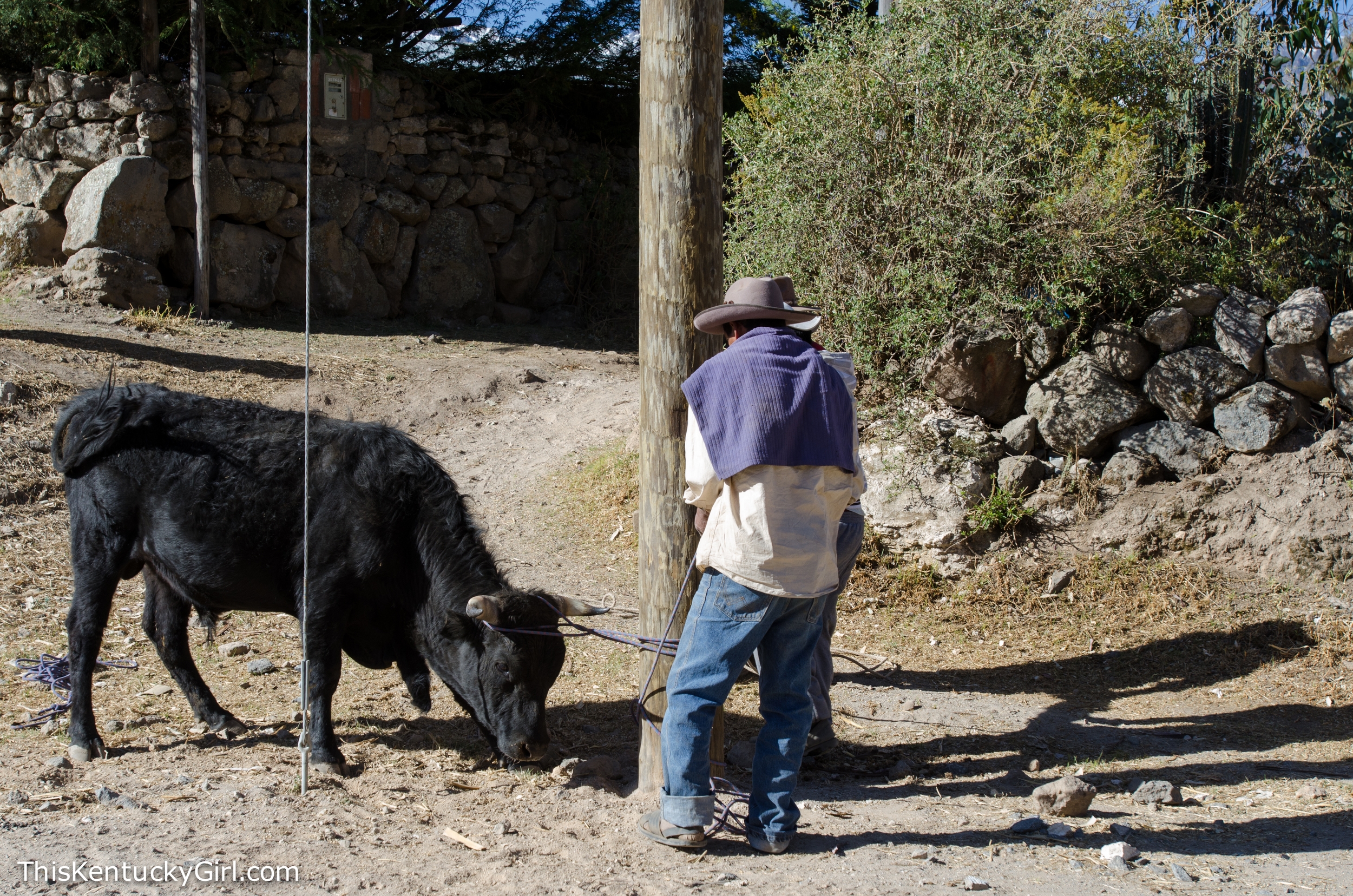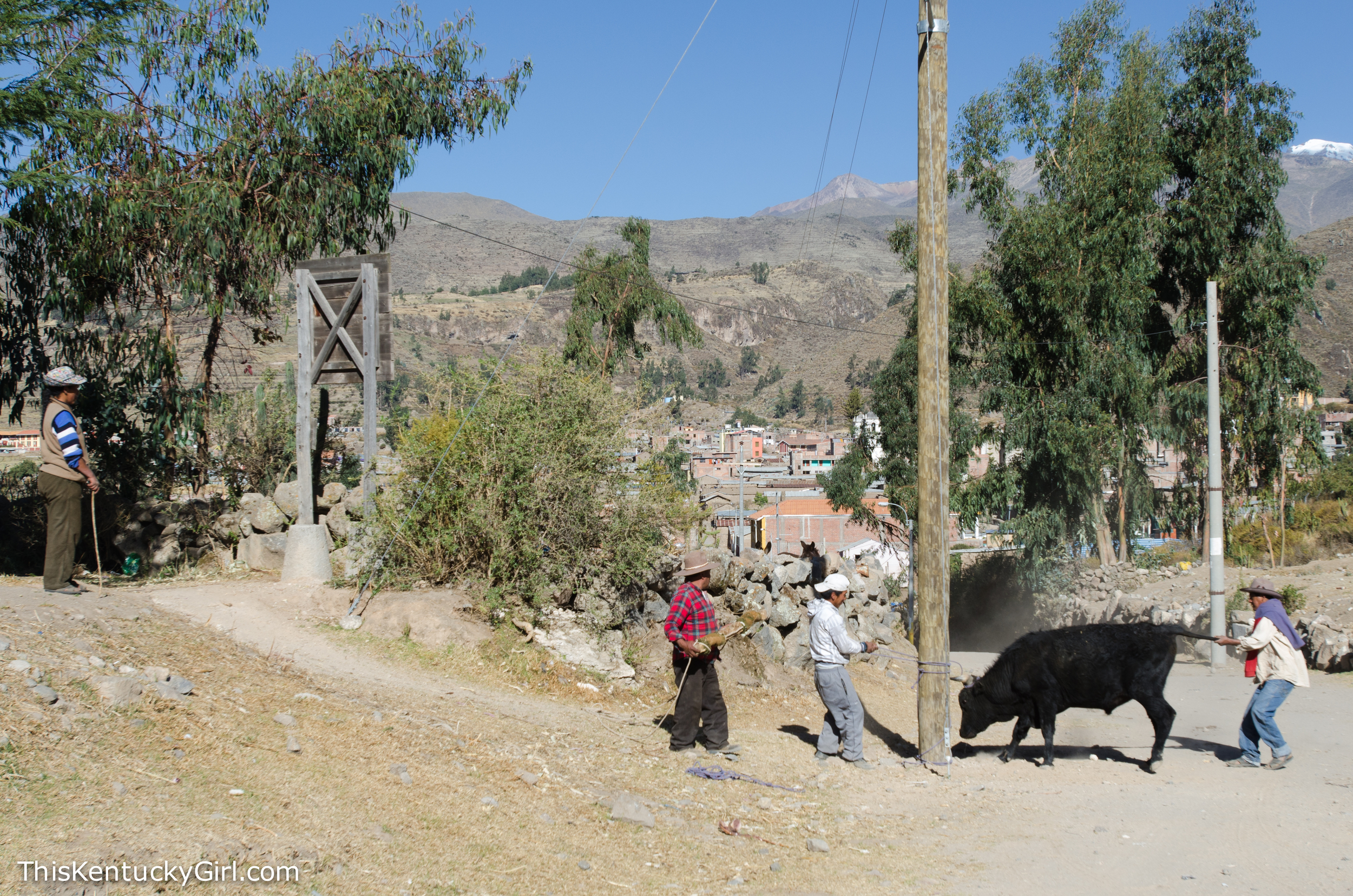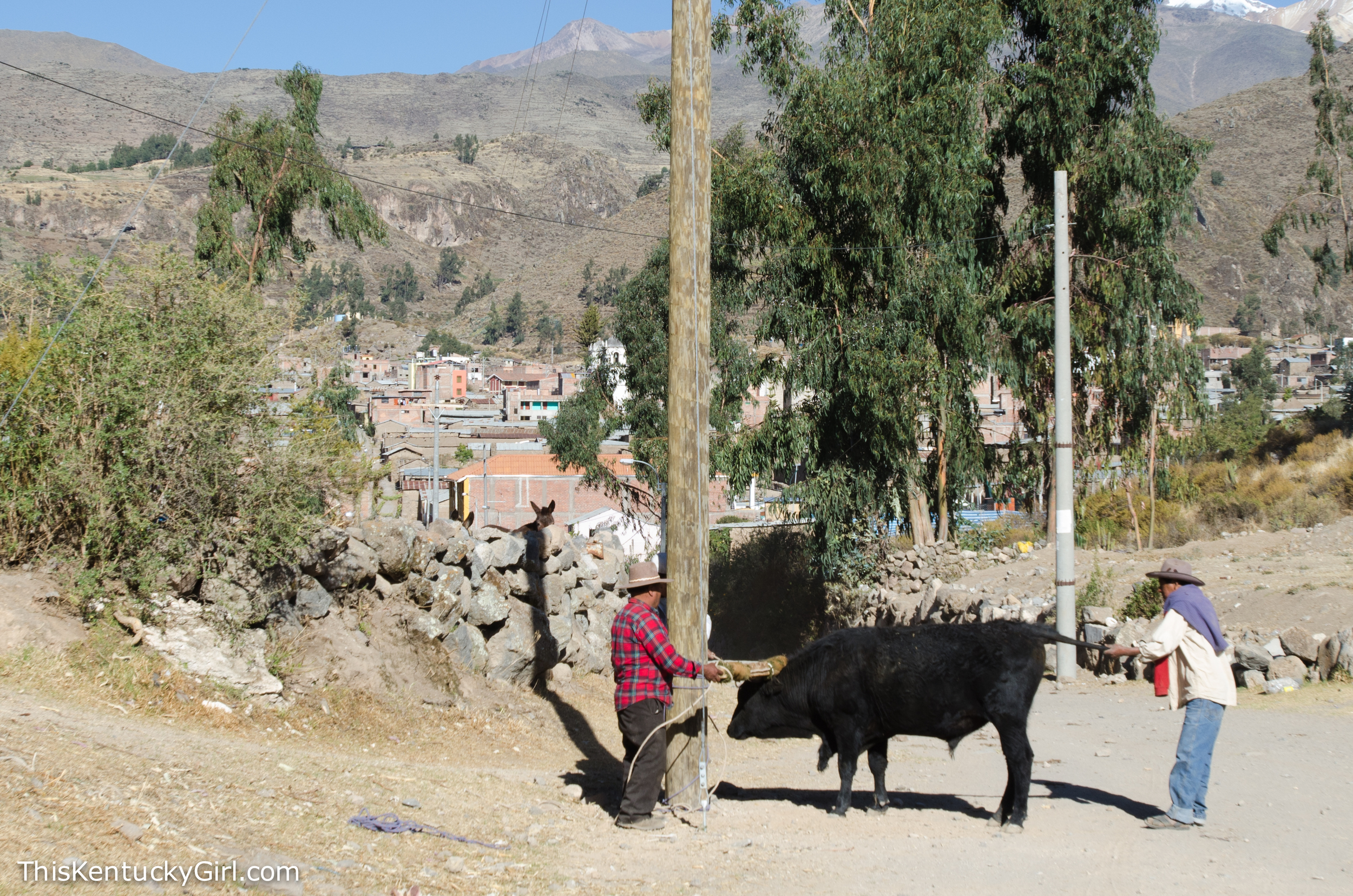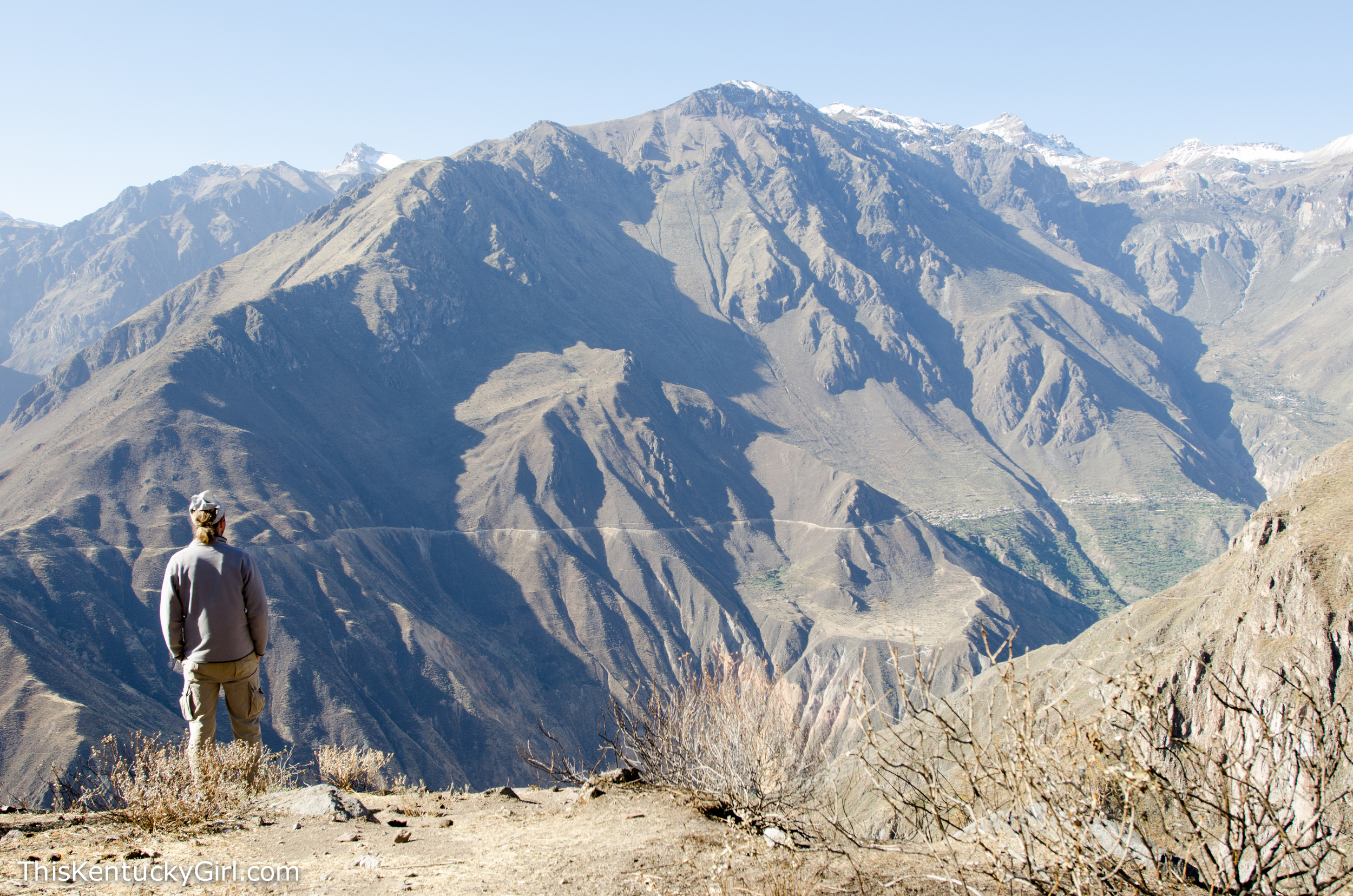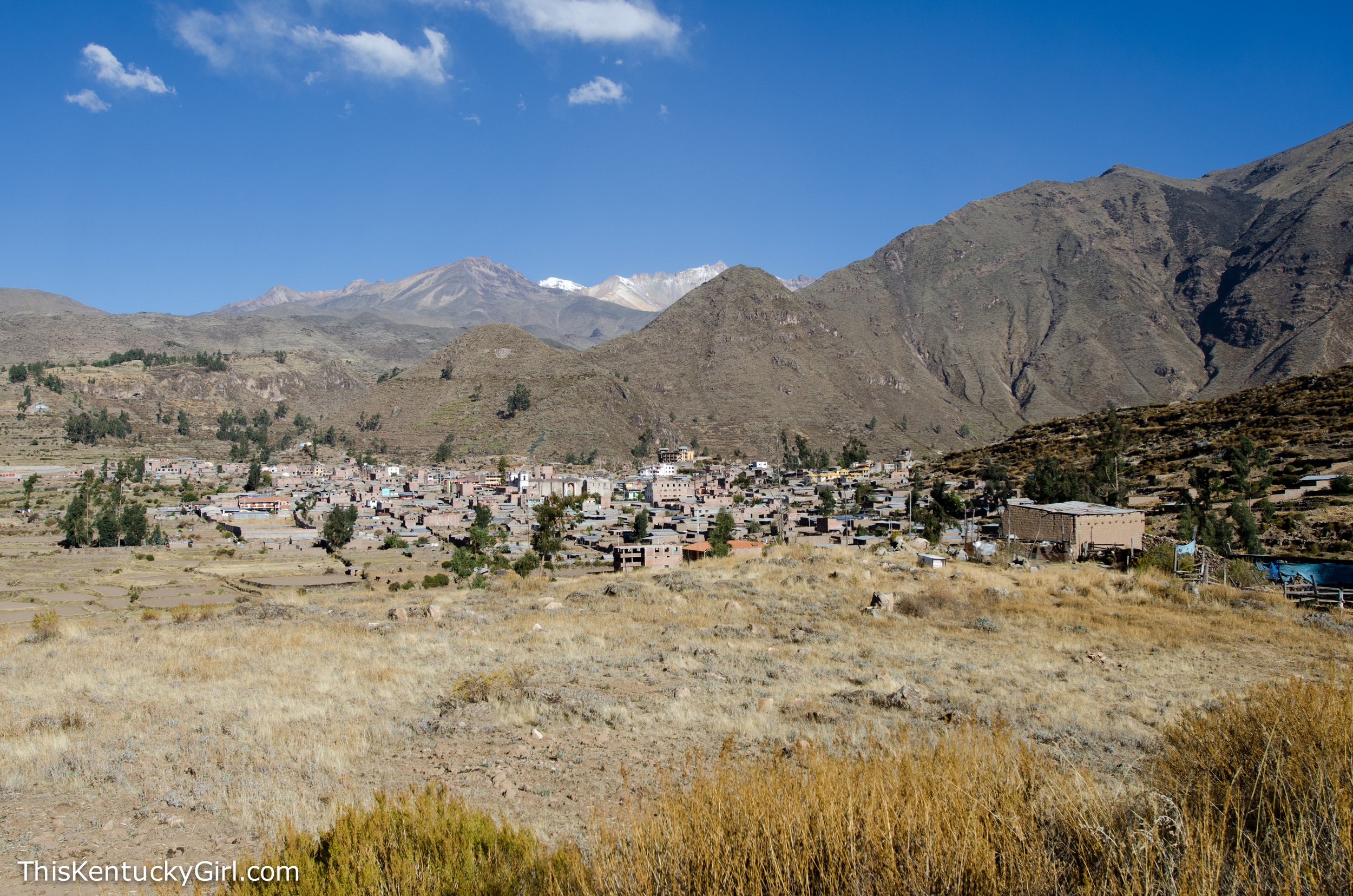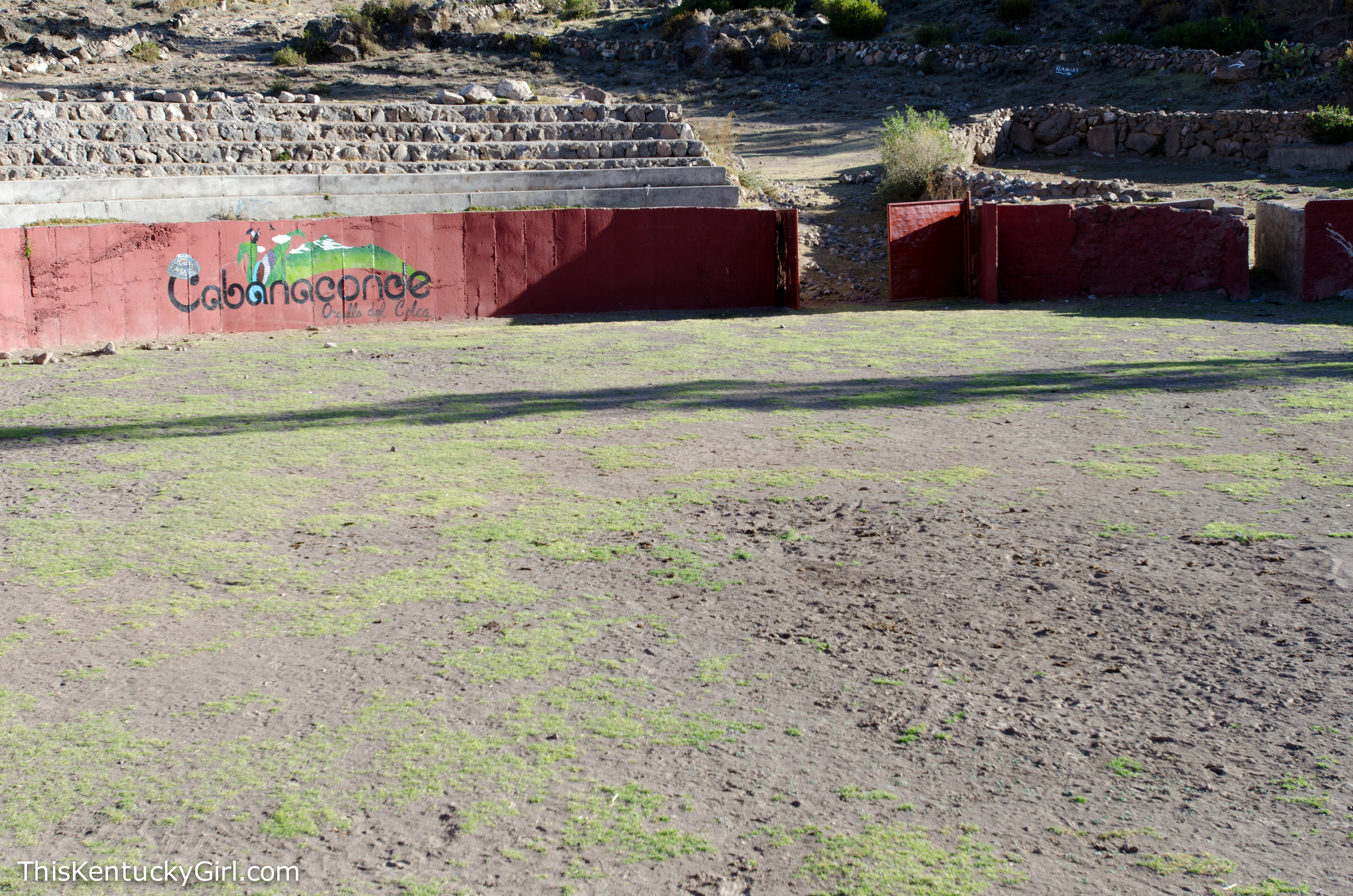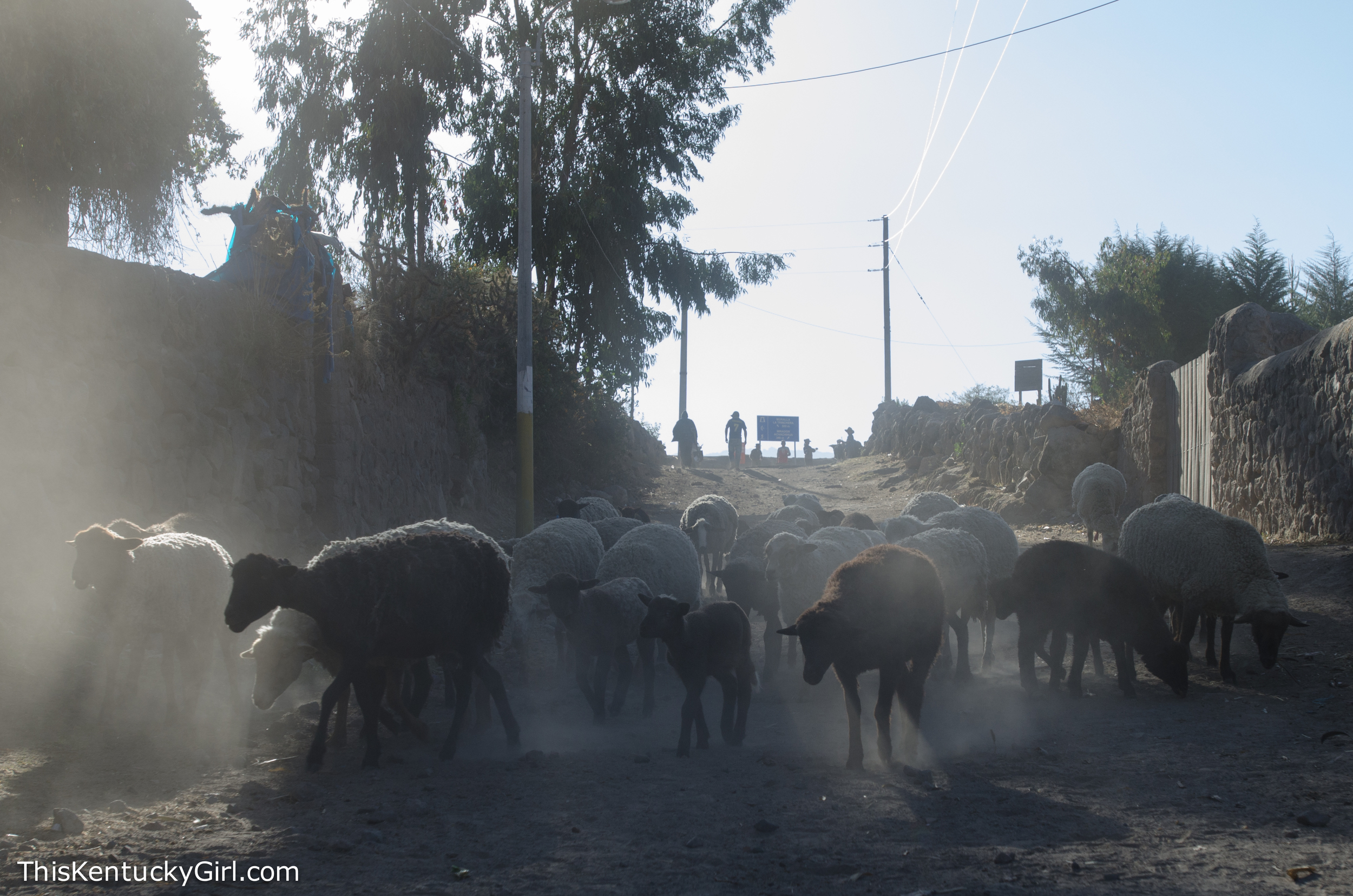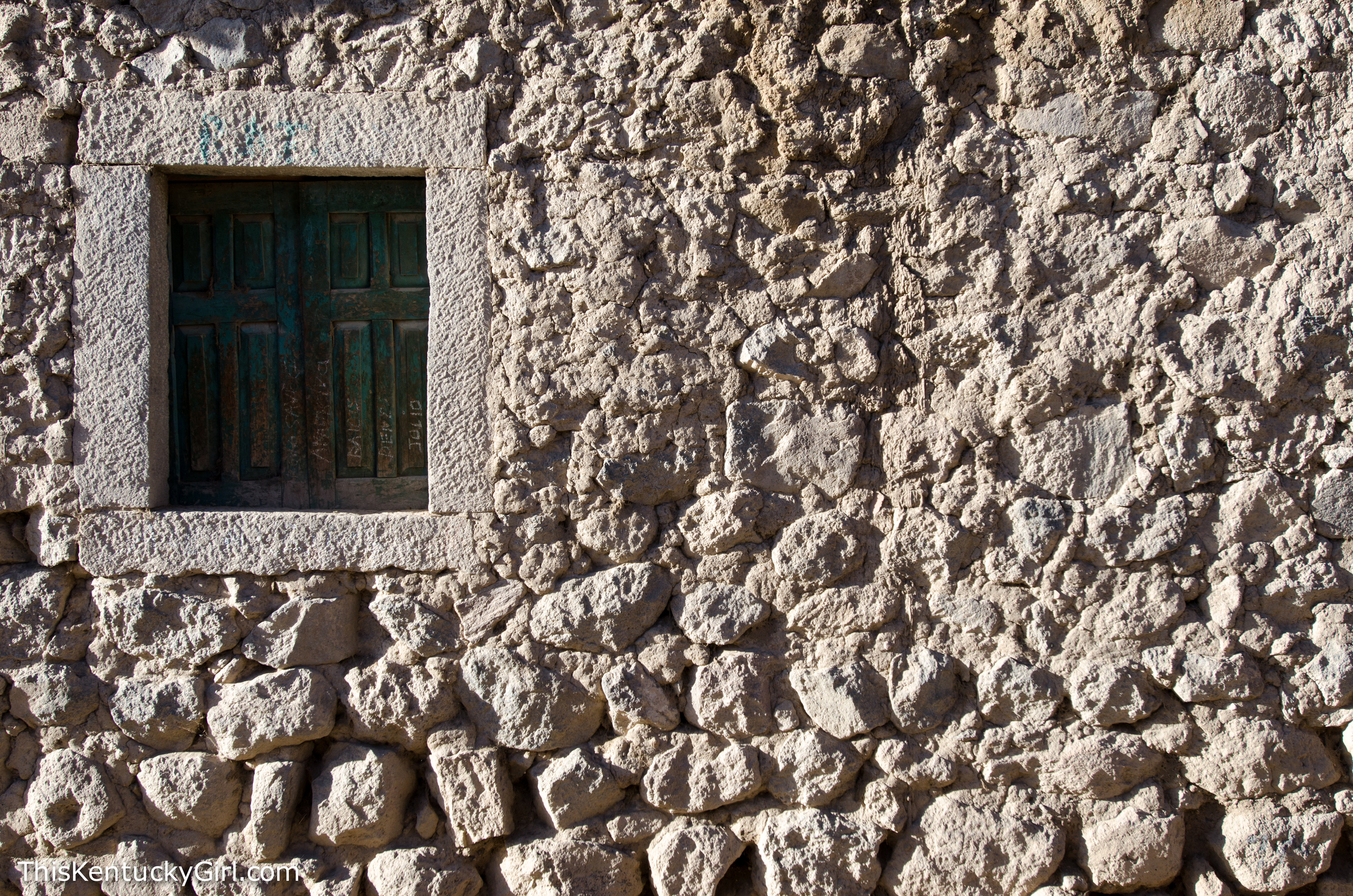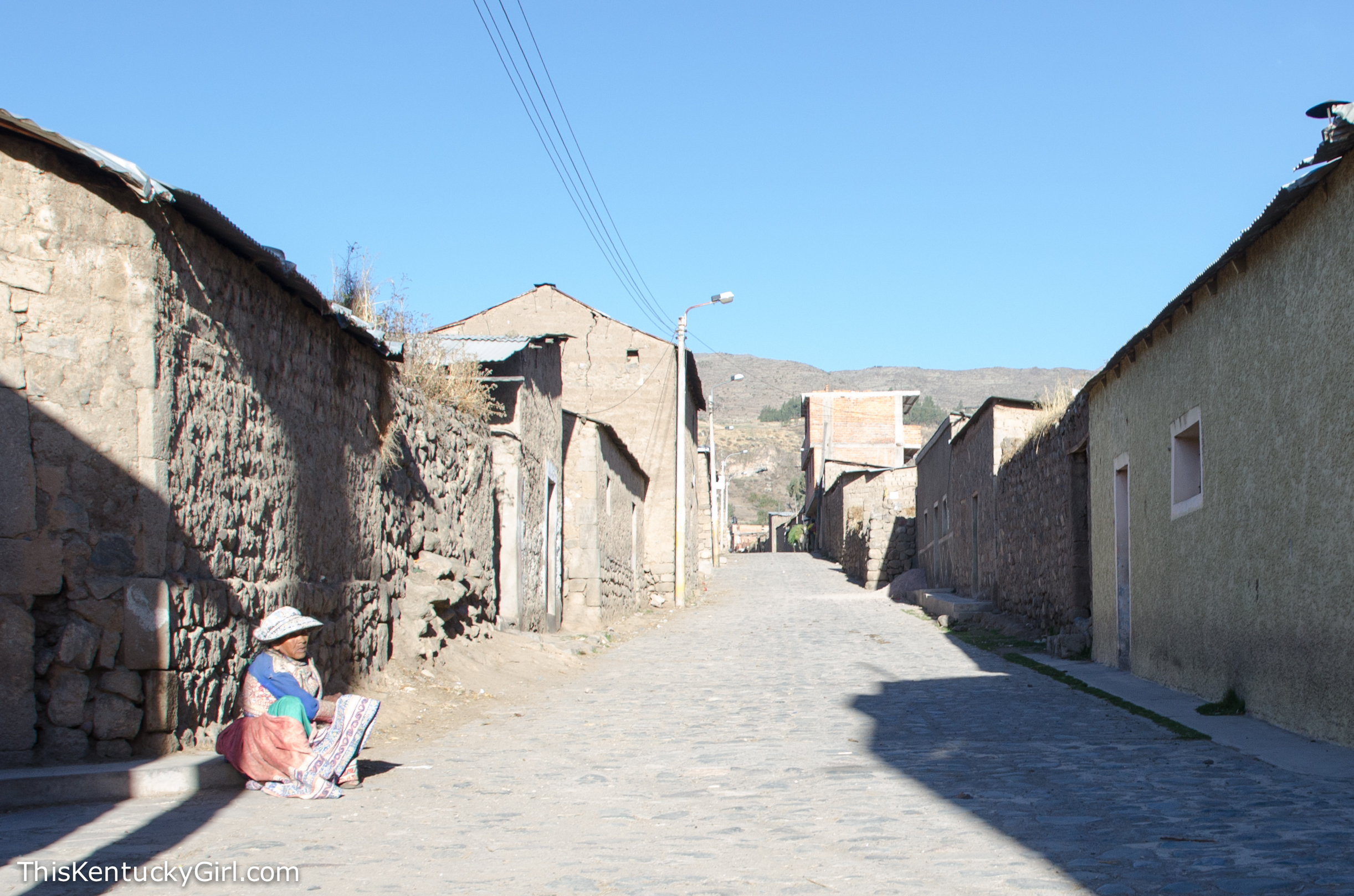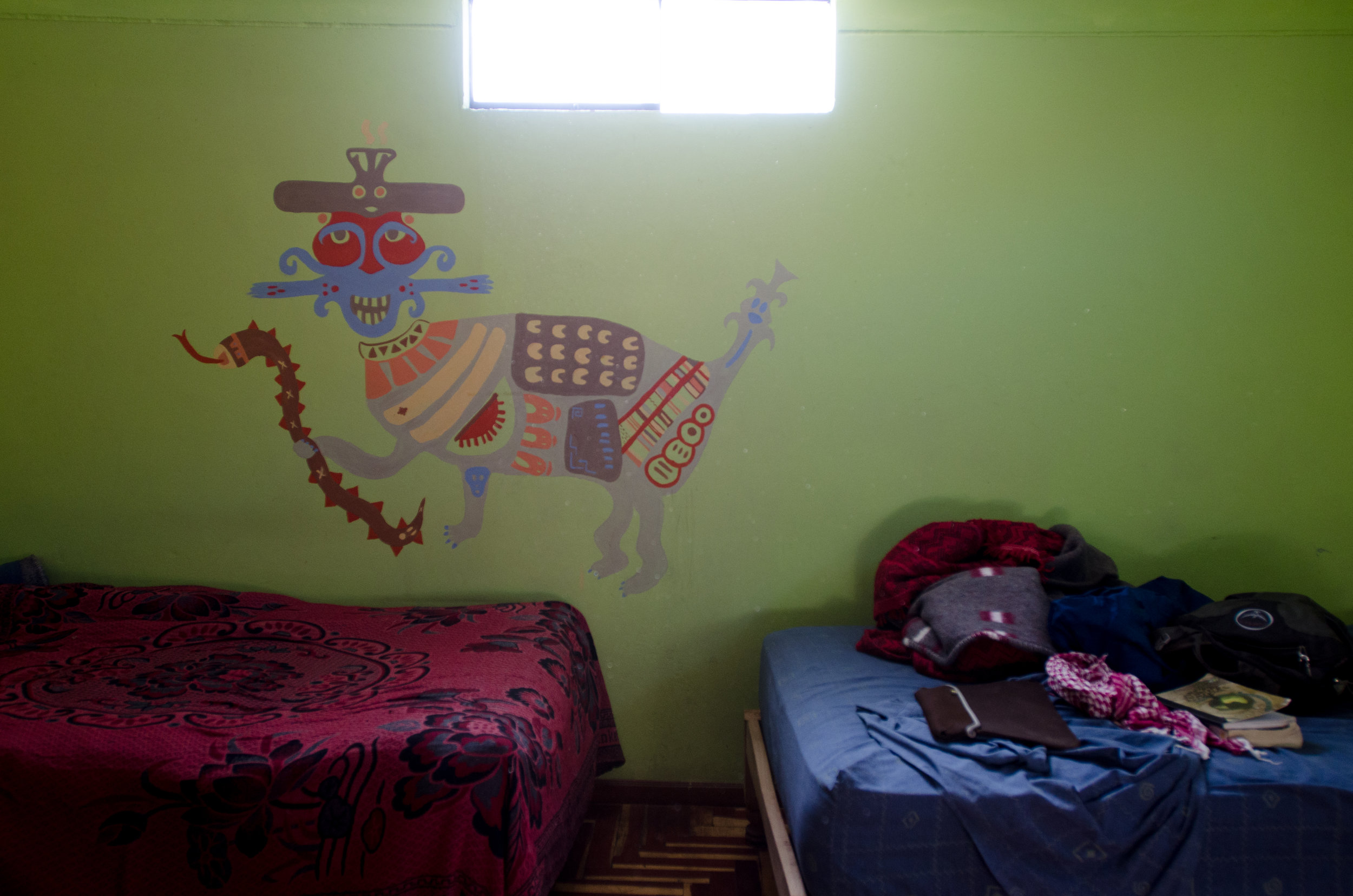We read that we didn’t need to get up at the crack of dawn to go bird-watching. We could go to a guesthouse that had a yard that was full of birds until eleven in the morning. Had we known the only birds that would be at the guesthouse were hummingbirds, we would have definitely gotten up early to walk through the rainforest instead. Word to the wise: get up early. That’s when the birds are out! We watched the hummingbirds, and then made our way towards the butterfly sanctuary, hoping we would get a little bit more action. Fortunately, the butterflies were a plenty and worth the visit!
If you look really closely at the feeder to the right of the picture, you can see three hummingbirds- or rather, the blur of their wings. While we were looking forward to seeing some bigger, more colorful birds, watching around thirty hummingbirds buzz around was mesmerizing. And a bit fascinating. There were actually three different feeders, but one feeder was under control of a “boss” hummingbird who was not keen on sharing. When any other hummingbirds tried to approach his feeder, he would chase them away!
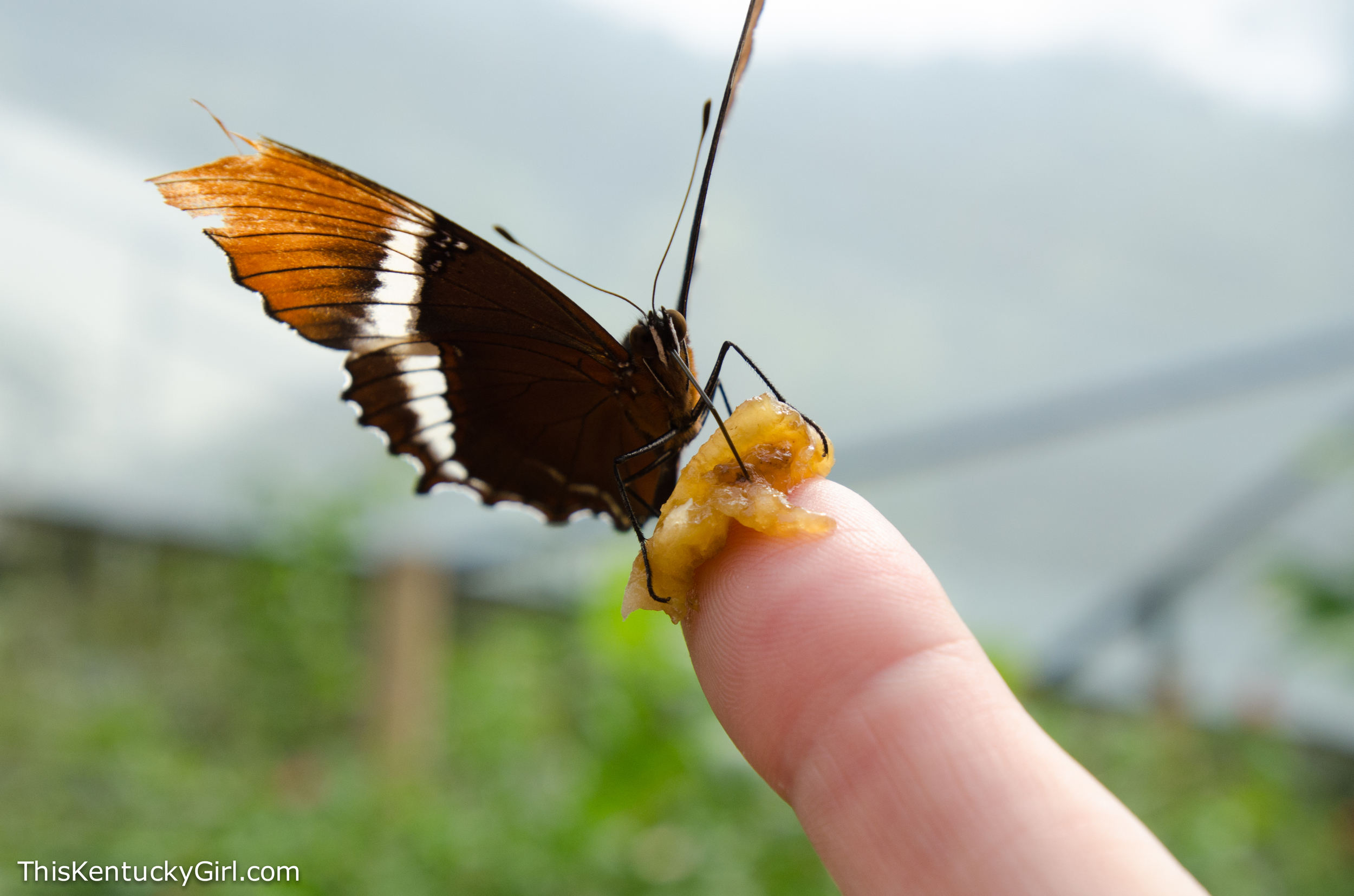


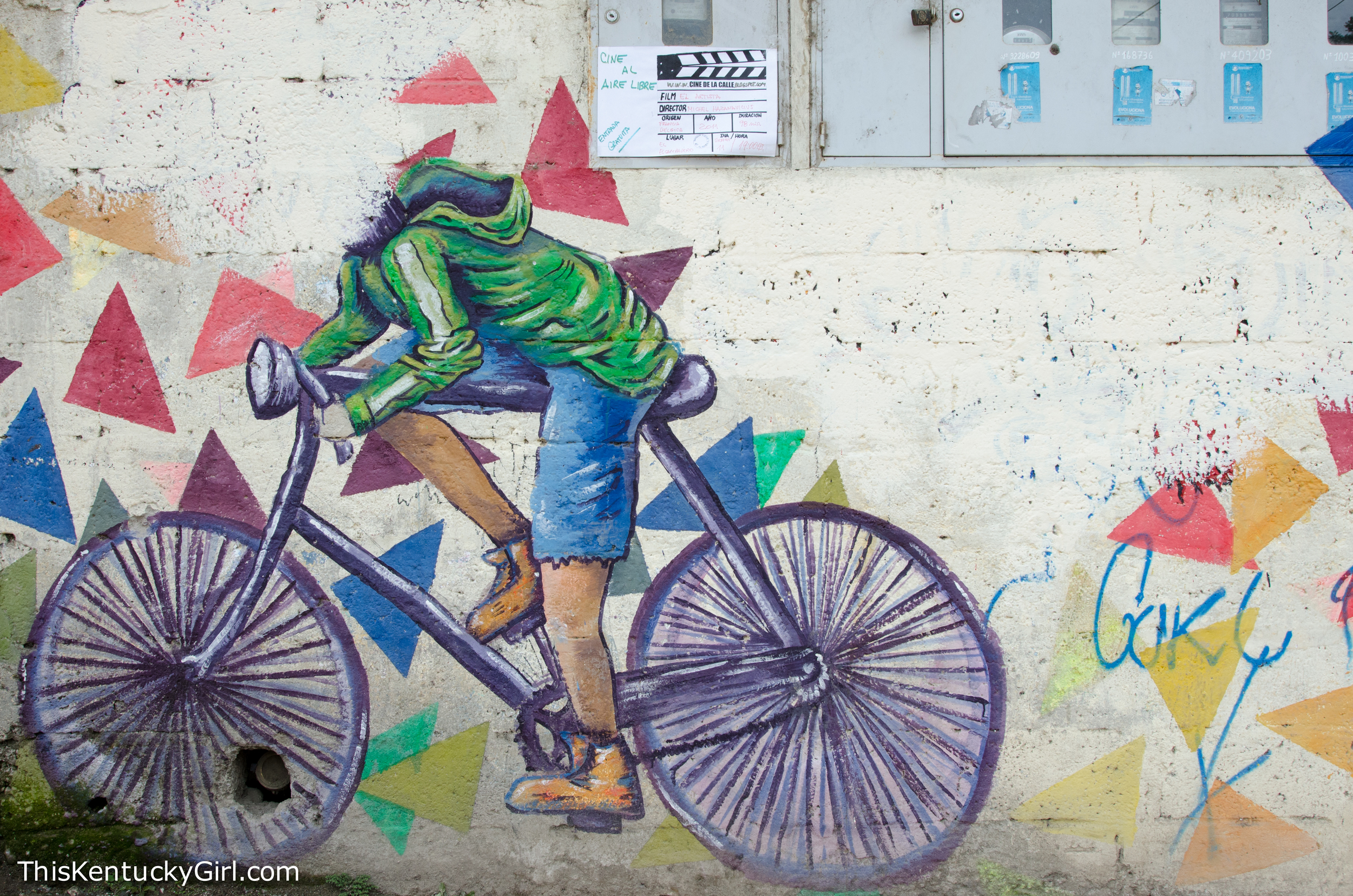

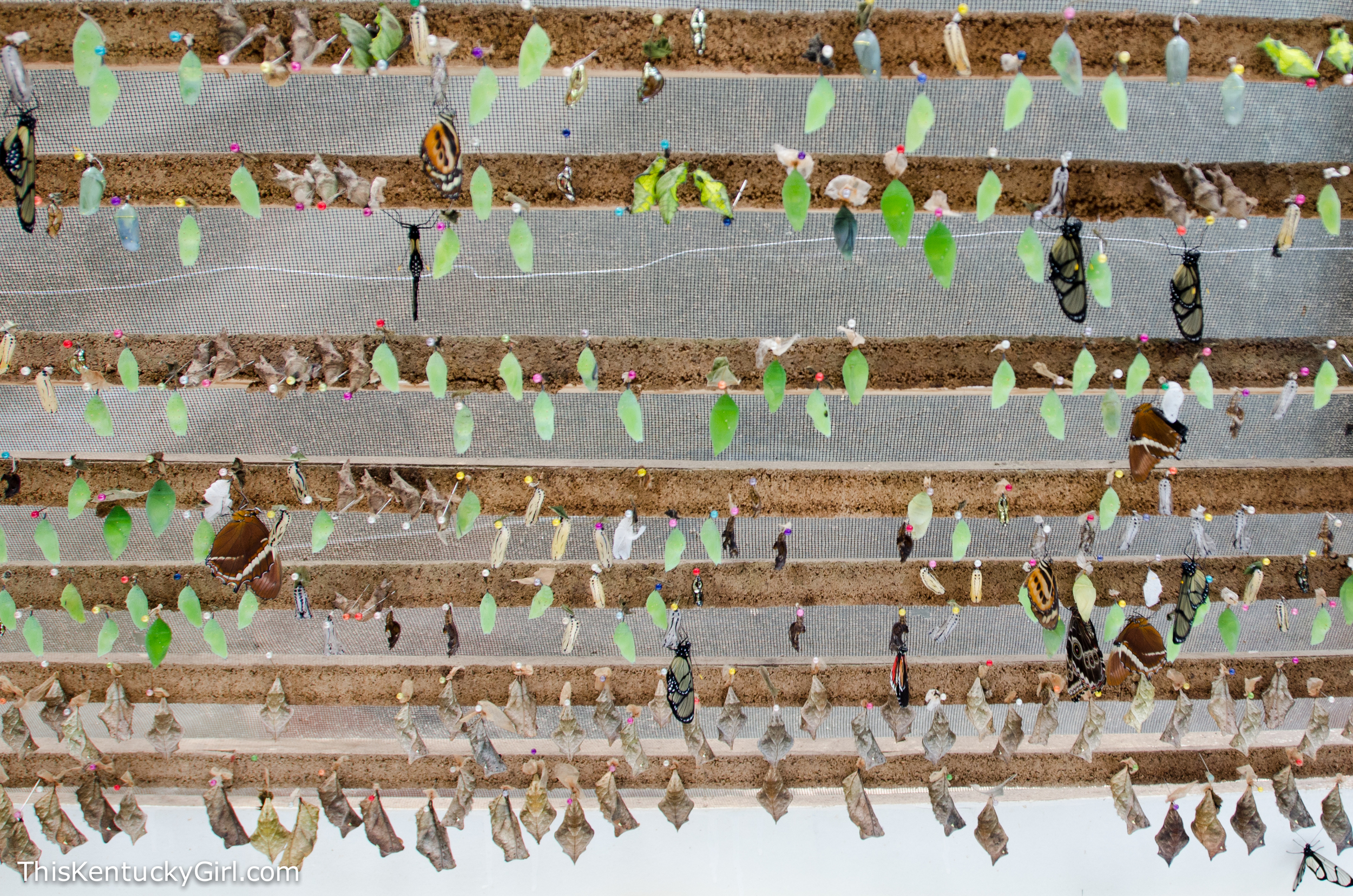
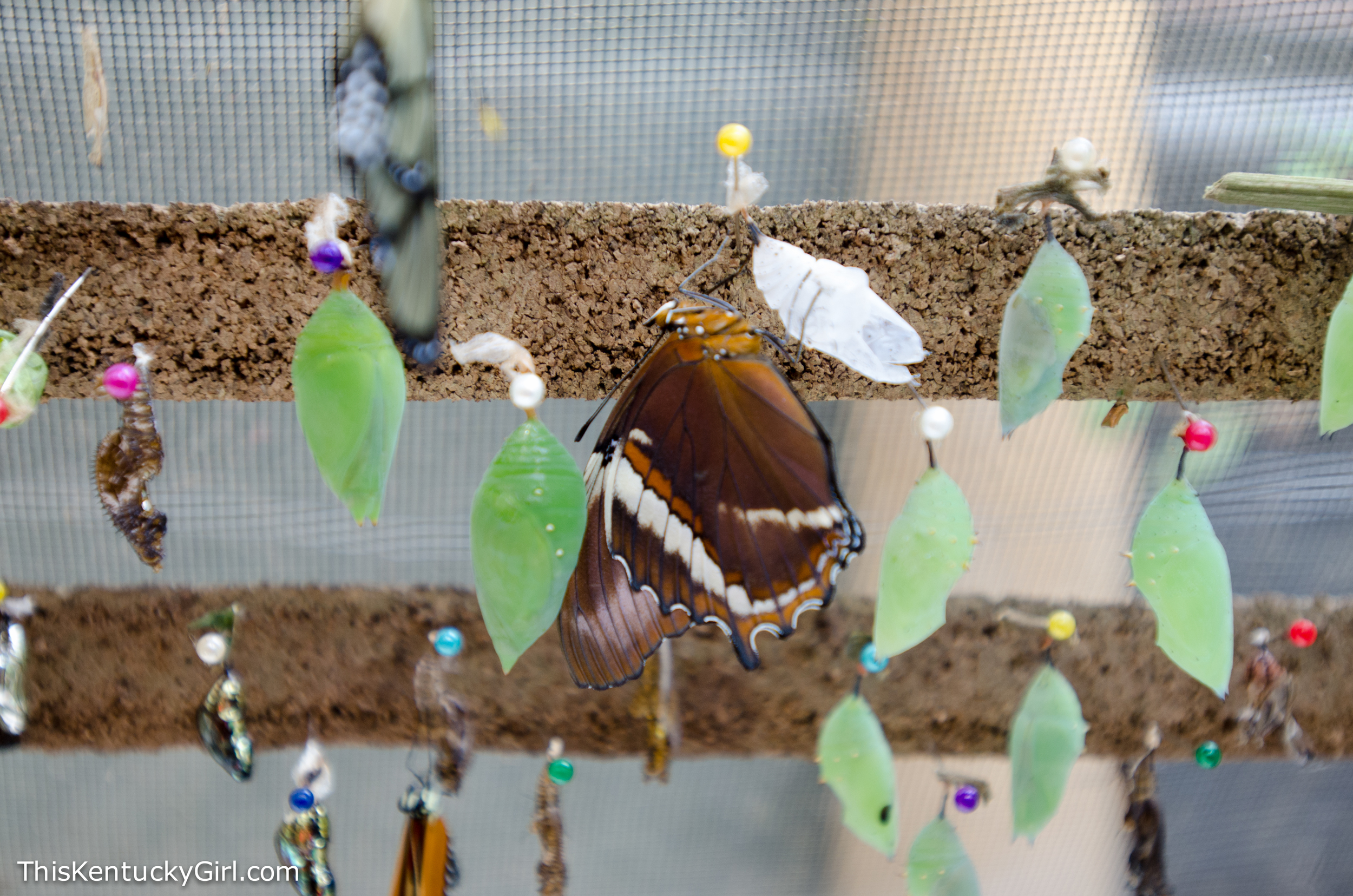
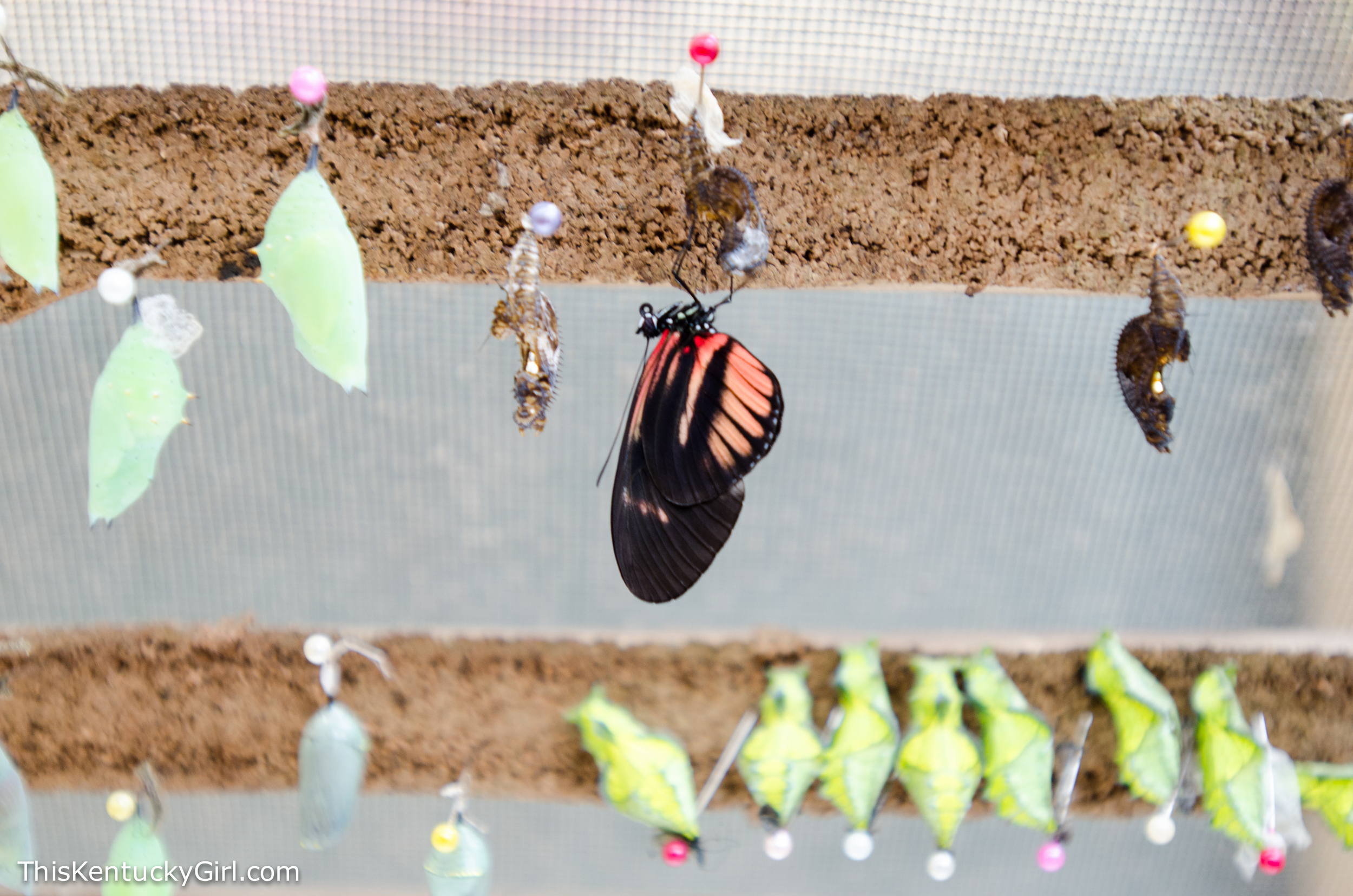
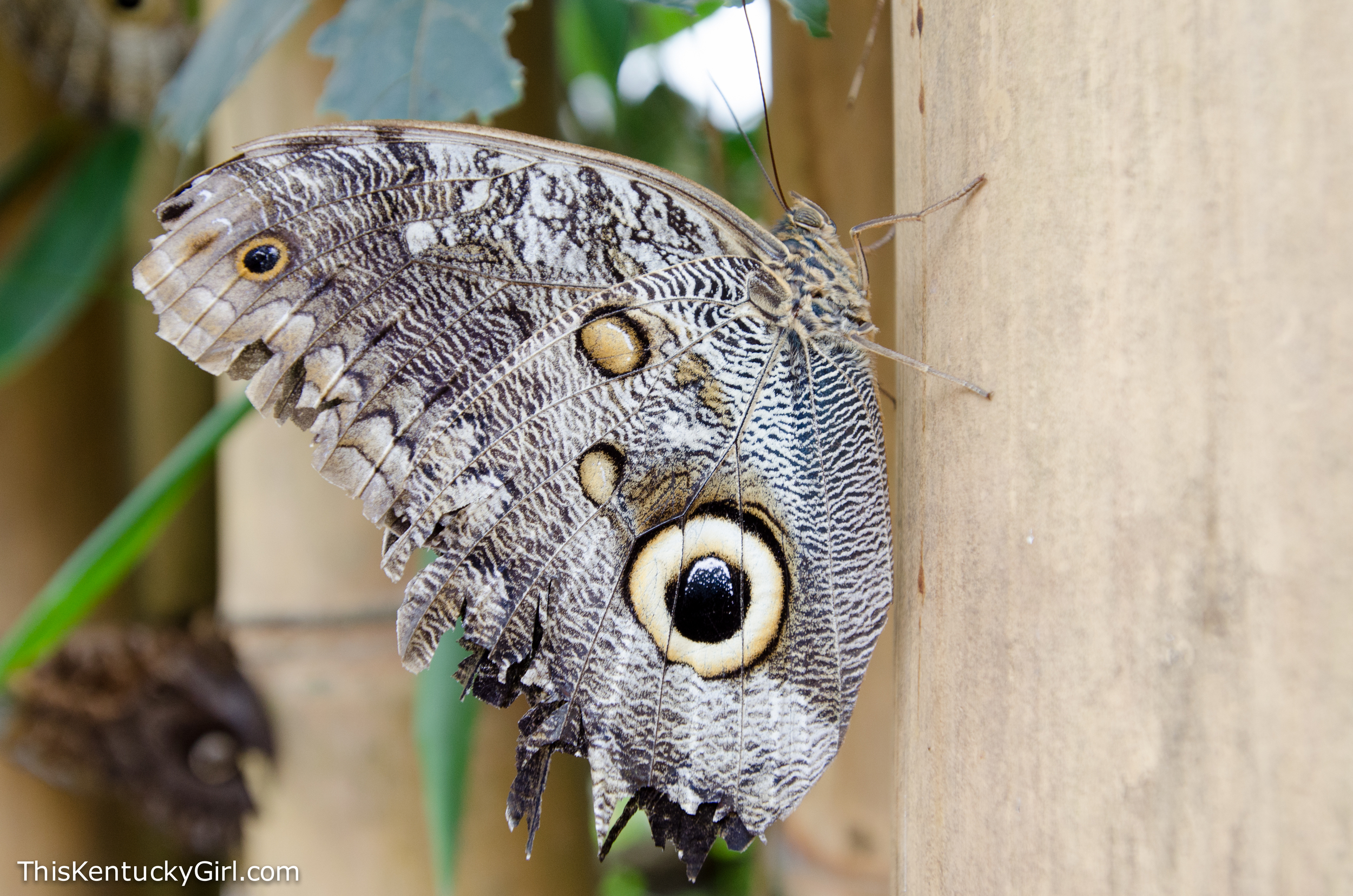
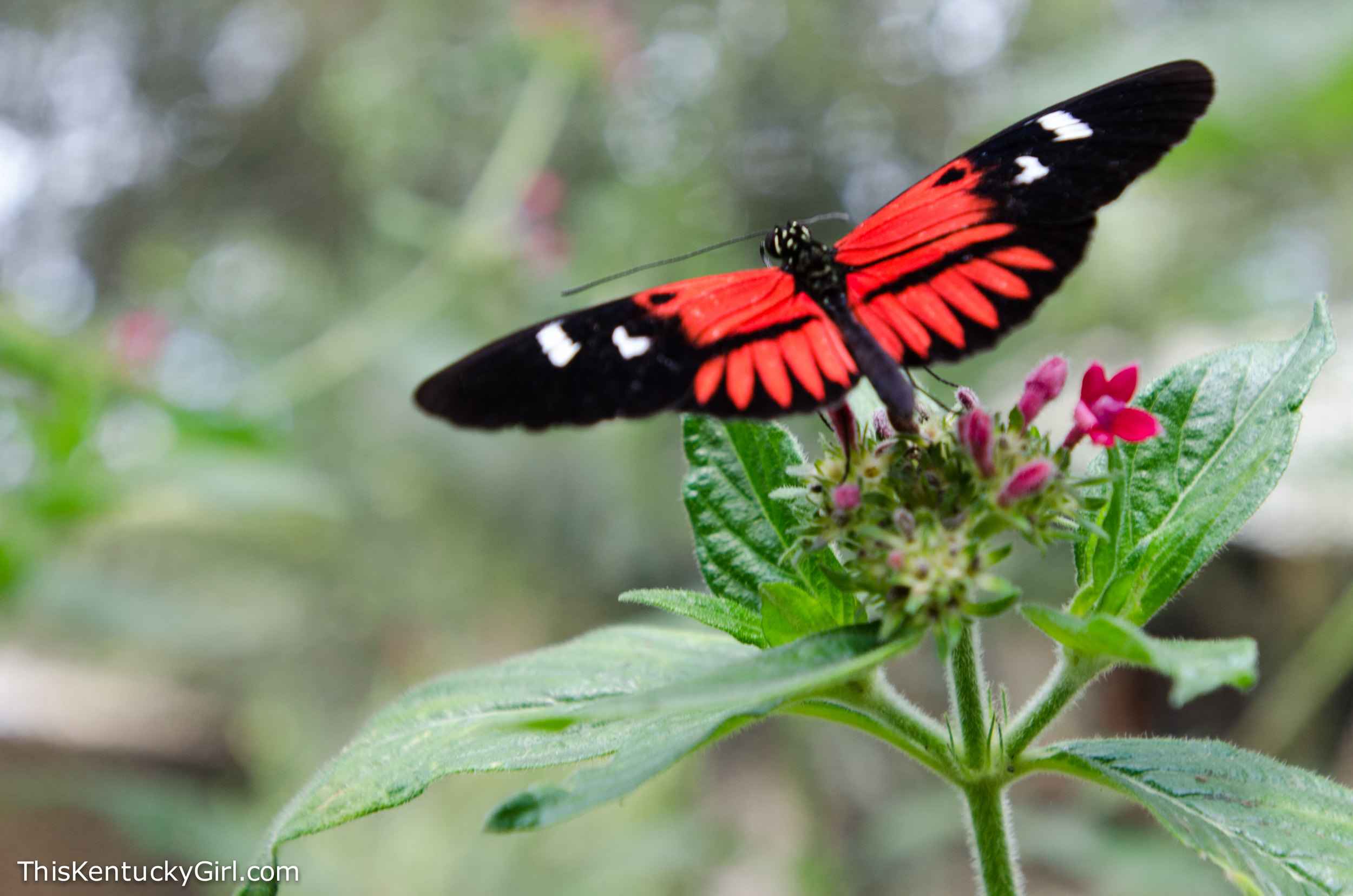

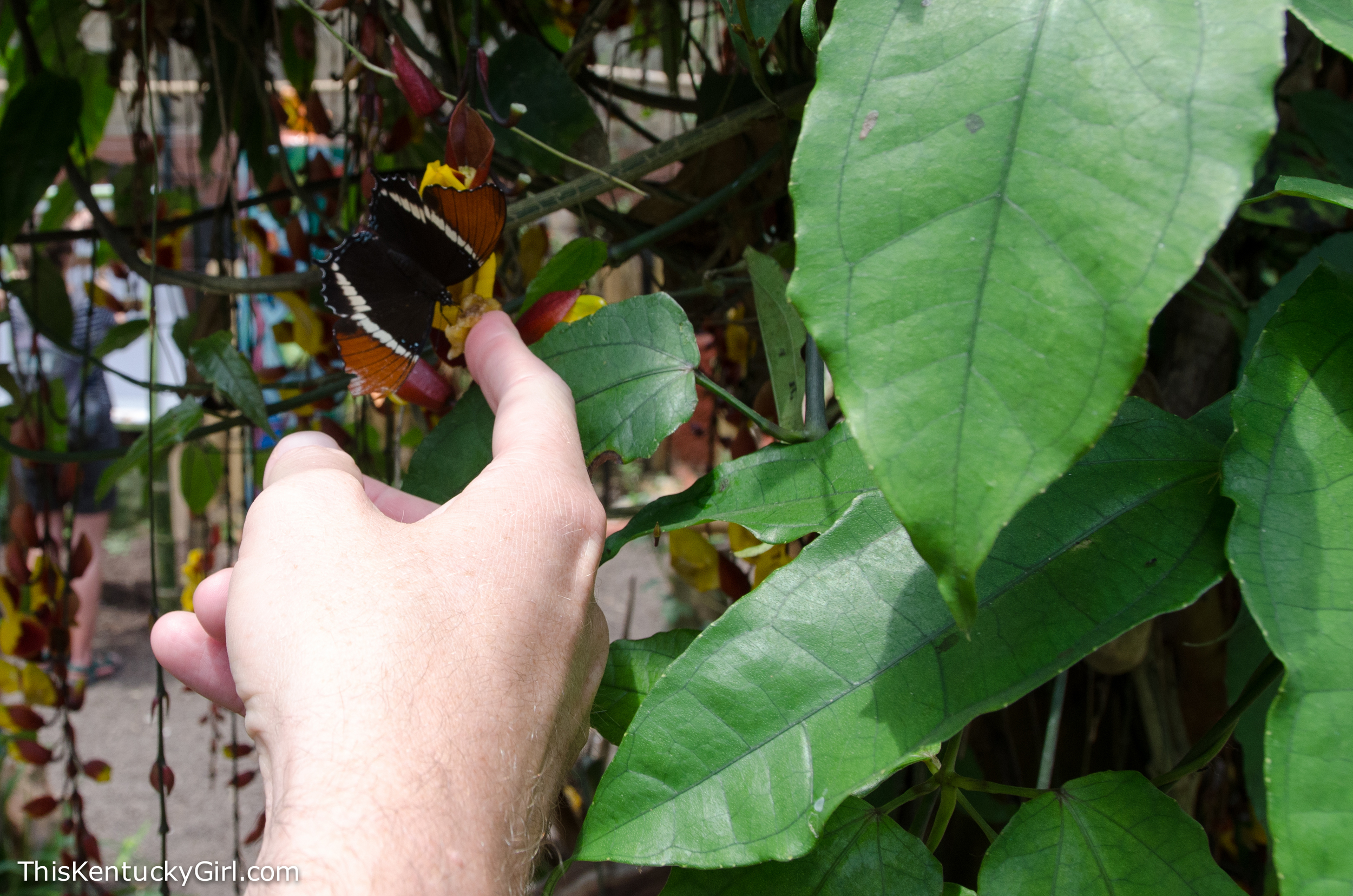
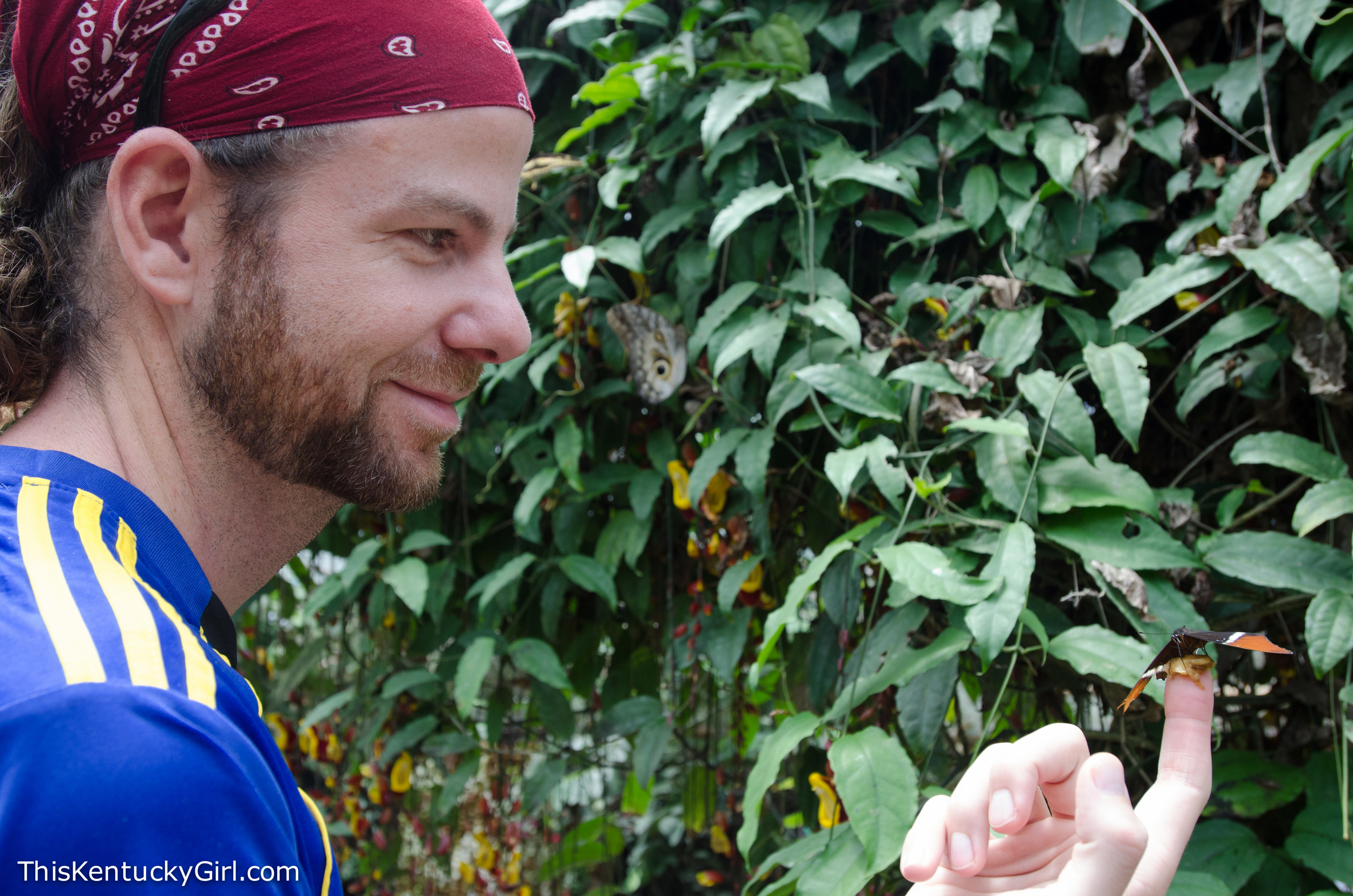

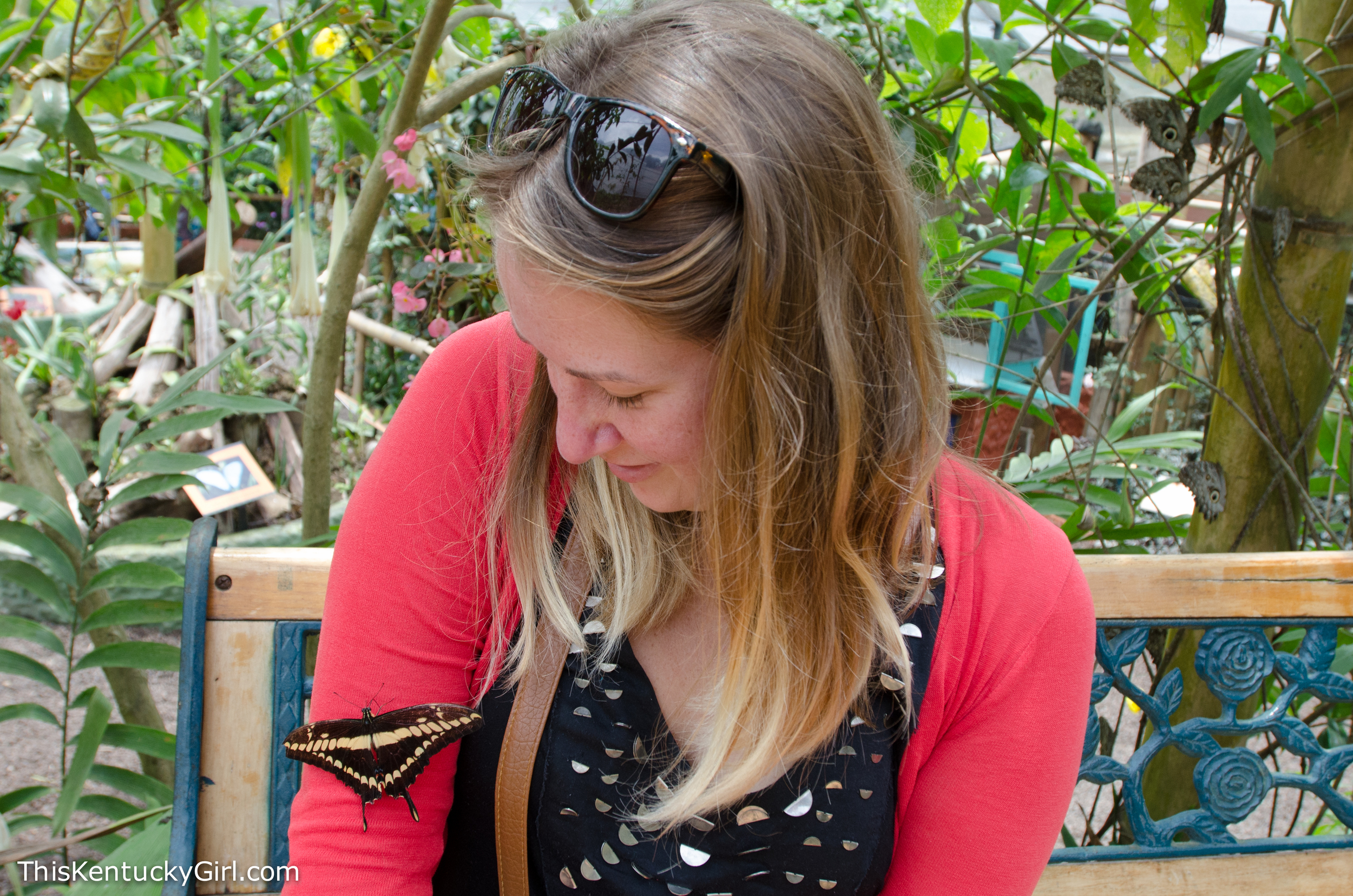
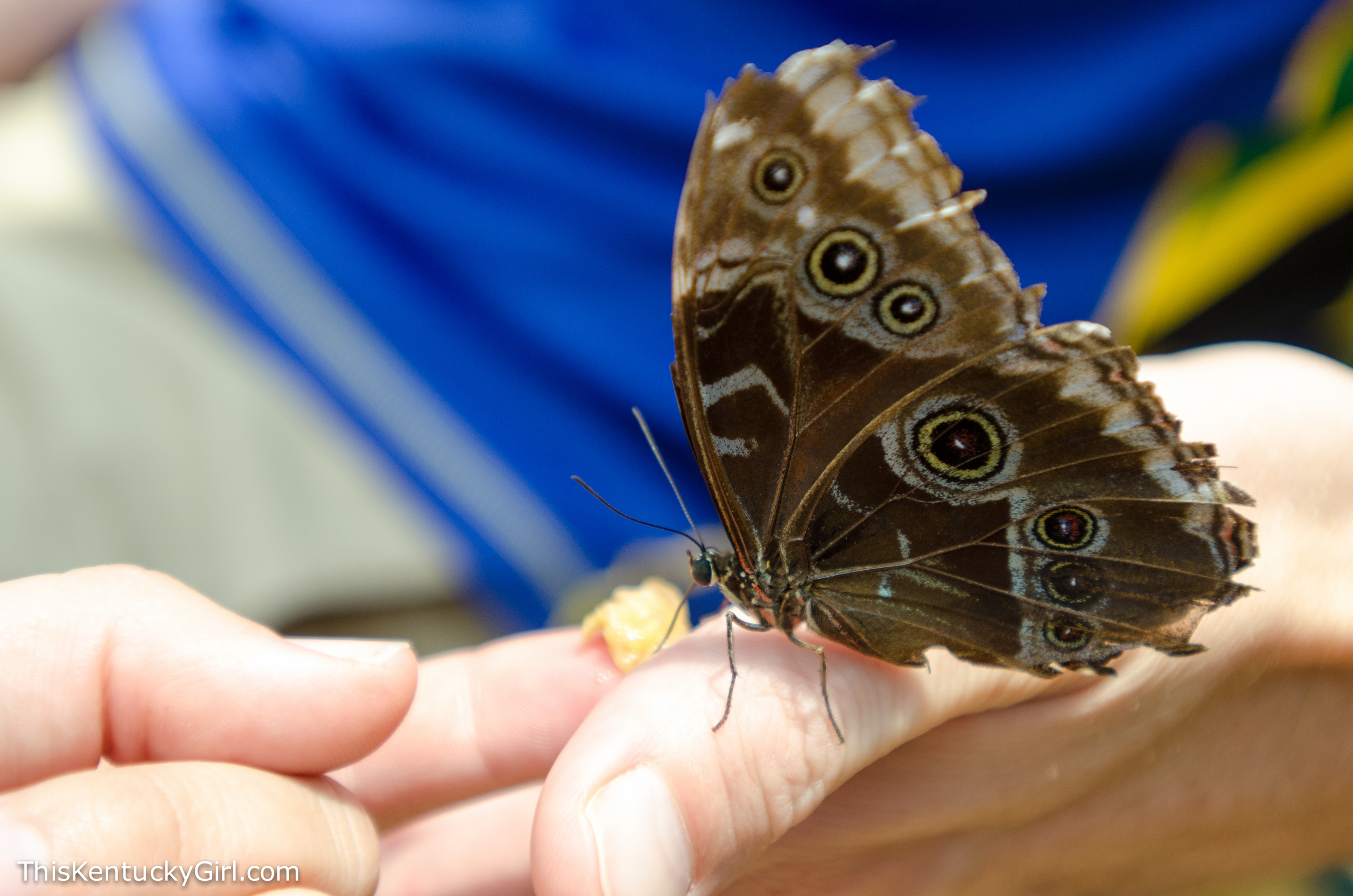
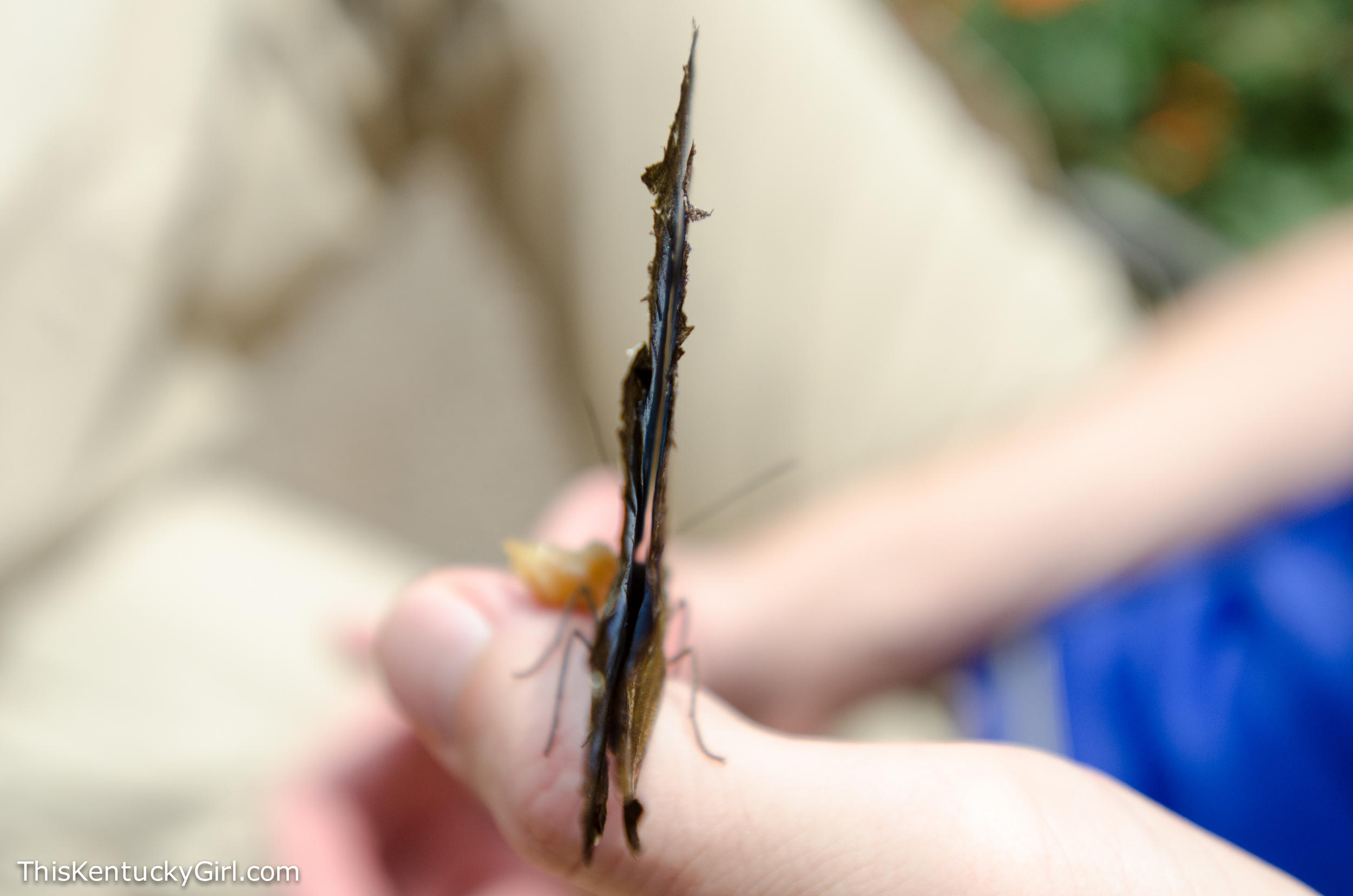

After about a half hour, we walked through town and then hopped into a cab to go out to the butterfly reserve. We’ve been to gardens before, but this was by far the most populated one that we’ve been to yet, even if there were a lot of the same butterflies.
We got a brief introduction, mostly so we could understand that the butterflies were in part harvested out in the rainforest, but also bred within the sanctuary itself. And then we were told we could feed the butterflies with any of the banana left out for the butterflies to feed off of. All we had to do was get a finger full of mushy banana and put it as close as possible to the butterfly’s mouth. Andrew was better at this than I was. Most butterflies seemed more interested in my orange sweater than any banana I had on my finger.
We tried – I tried to get a beautiful bright blue butterfly to land on one of us, or at least let us feed it, but failed for the majority of our visit. Right as we were about to leave, one of the blue butterflies landed on Andrew. He stayed long enough for me to get some banana for him to eat. Unfortunately snapping a picture of him with his wings spread, revealing the bright blue wasn’t easy.
You can see a little sliver of bright blue inside the wings as they are closed. These guys flitted all over Mindo. They were just beautiful. It was fascinating to see how different they looked when their wings were closed!



